Cars We Love & Who We Are #70
Likely the only car event of its kind in the nation, the second annual Collectible Car Fair for Kids and Teens kicked off on Sunday September 21st in Park Ridge, New Jersey. Once again students 18 and under could get up close and personal with automotive history from behind the wheel of landmark vintage cars spanning the 20th century.
One-of-a-Kind Car Show for Kids
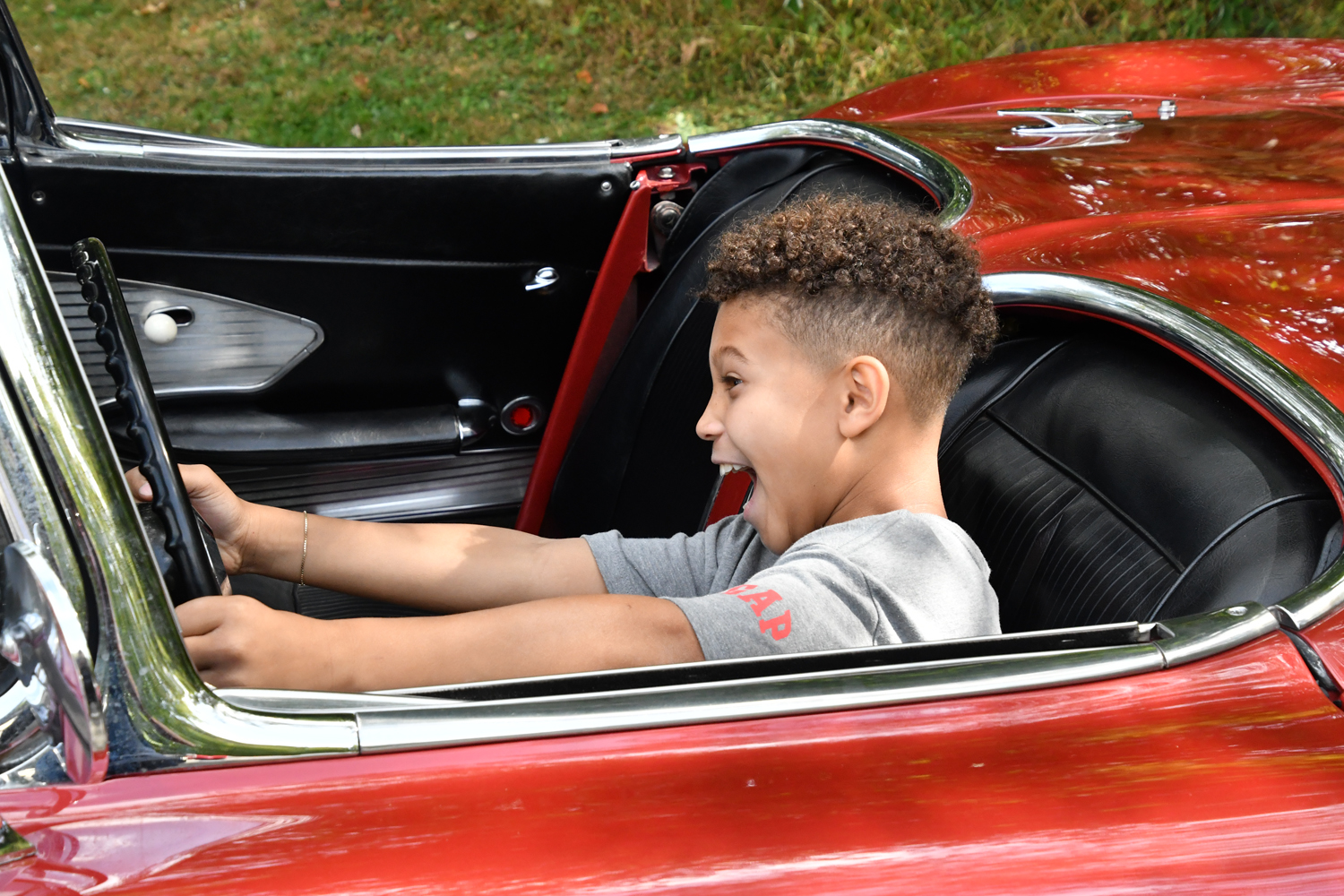
Guaranteed, the likes of this handsome white time machine had not traveled this suburban street in close to 100 years. Chugging proudly down the tree lined lane it serenaded the surrounding neighborhood with a deep throated rumbling mechanical chorus common in an earlier century. This 1908 Brass Era Pope/Hartford automobile made a striking entry onto the show field to take its place next to a 1903 Curved Dash Oldsmobile. Much like the Dawn Parade at the Amelia Island Concours, the crisp early morning light showcased an eclectic array of milestone vintage cars as they arrived.
To spark interest in a younger generation in advance of the show, local school systems 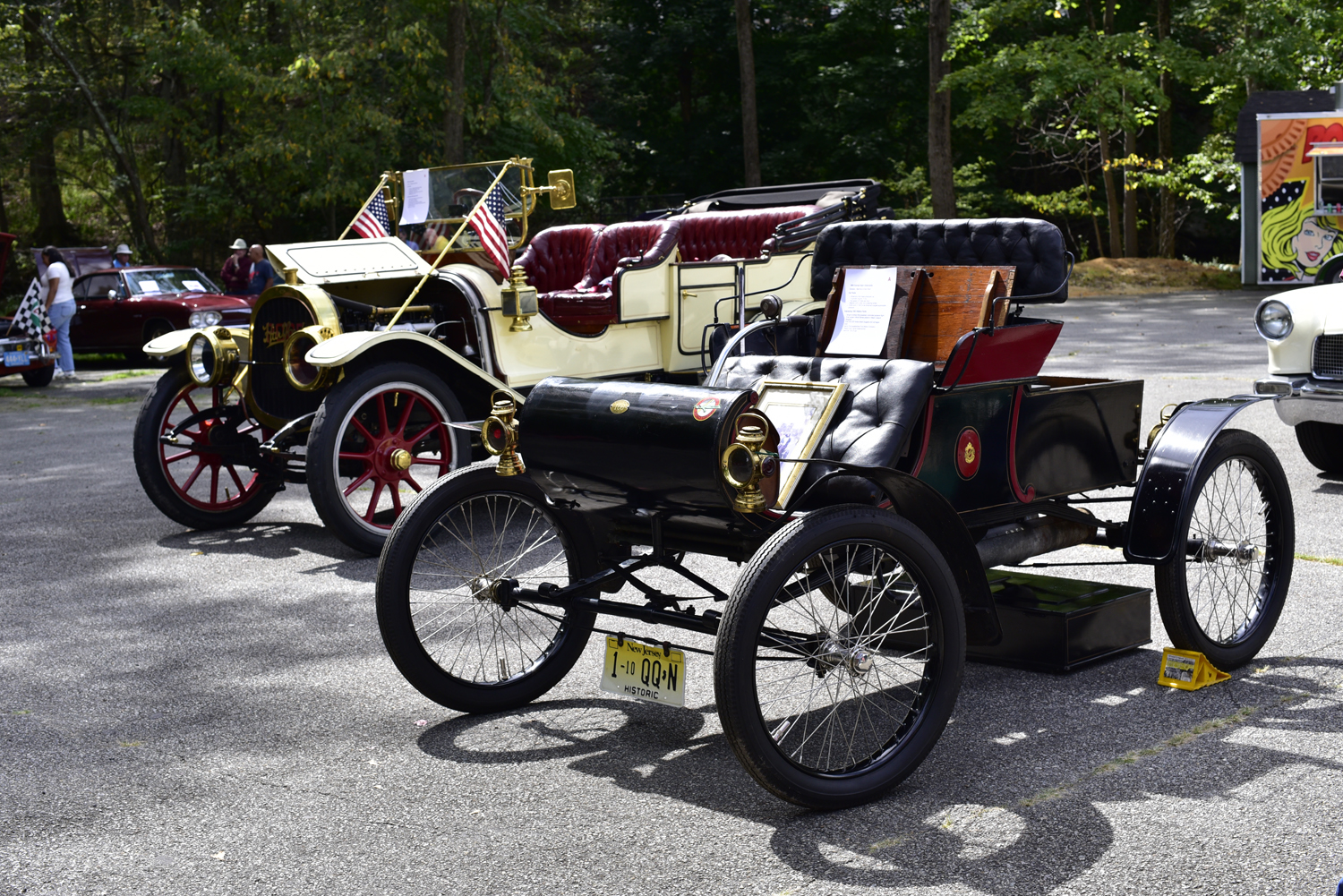 were lobbied. The effort succeeded in generating the opportunity to deliver a presentation to middle school students on the significance and excitement of vintage automobiles. The effort’s intent resided in motivating children to take advantage of the coming event to experience historic vehicles first hand. In so doing they could better appreciate the character, beauty, and excitement of the iconic vehicles that revolutionized individual lives and forever changed global culture in the 20th century. The effort proved successful.
were lobbied. The effort succeeded in generating the opportunity to deliver a presentation to middle school students on the significance and excitement of vintage automobiles. The effort’s intent resided in motivating children to take advantage of the coming event to experience historic vehicles first hand. In so doing they could better appreciate the character, beauty, and excitement of the iconic vehicles that revolutionized individual lives and forever changed global culture in the 20th century. The effort proved successful.
In addition to the Oldsmobile and Pope/Hartford, the curated field of 30 milestone cars included a 1915 Ford Model T, 1929 Ford Model A, 1934 Packard, 1943 Willys Jeep, 1956 Cadillac Coupe deVille, 1957 MGA, 1963 Porsche 356, 1965 Ford Mustang, 1967 VW Beetle, 1970 Pontiac GTO, 1982 Ferrari 308GTSi, 1983 DeLorean, 1988 BMW E30M, and 1996 Dodge Viper.
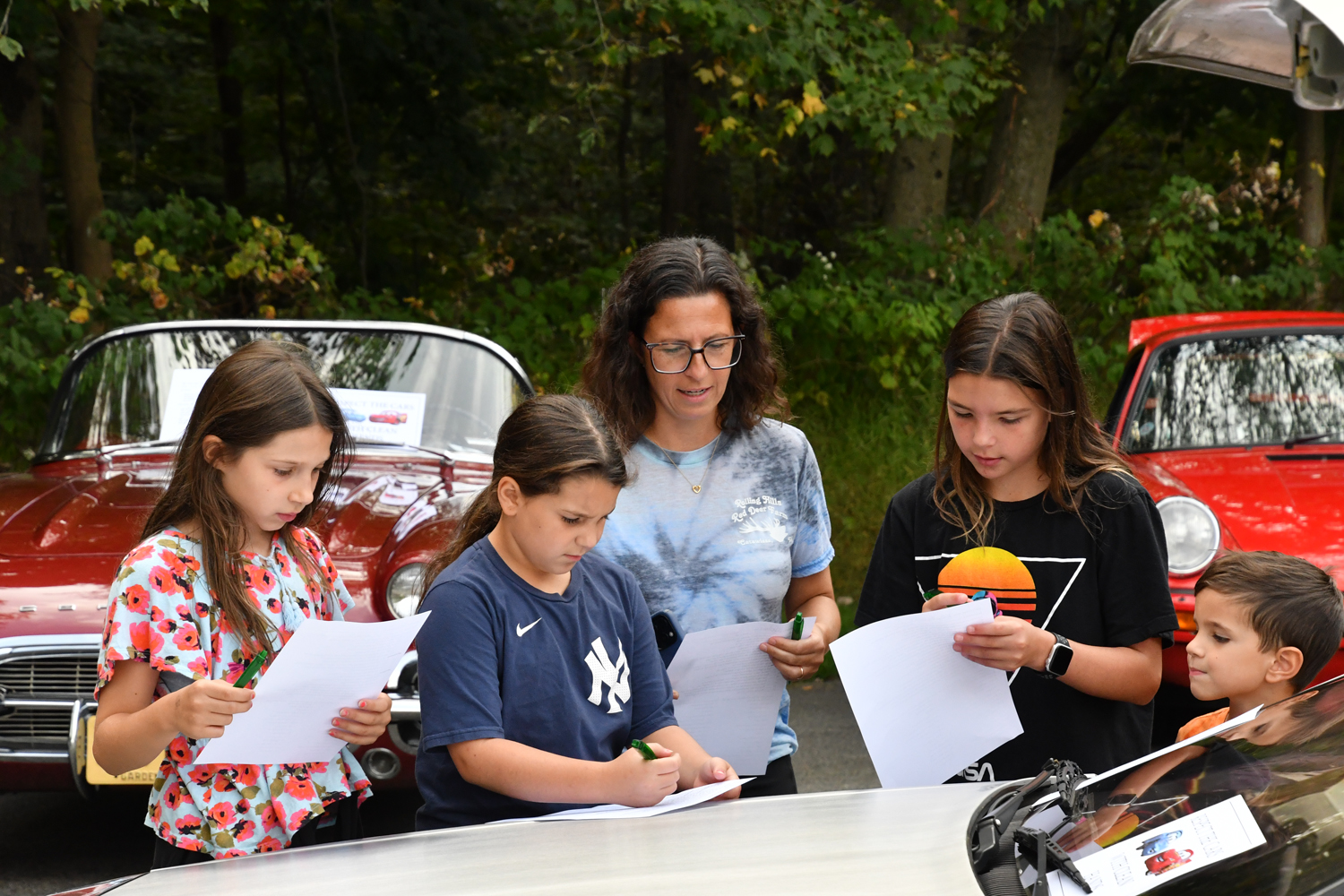
Offering far more than a passive viewing experience, the event provided children who registered in advance the opportunity to learn the basics of judging classic cars. The class, conducted on-site the morning of the show, was taught by experienced concours judge and past Director of the Rolls-Royce Owners’ Club, Bob Austin. Students, benefiting from Austin’s decades as an automotive industry icon, worked with techniques for assessing automobiles revered as generational standouts that propelled design and engineering into the future. With class work completed, students immediately would put their freshly acquired knowledge to work by judging the cars on display.
A primary interactive feature of the show and considered by many as the secret sauce for facilitating student involvement, the “Fun Hunt for Car Facts” challenged all comers 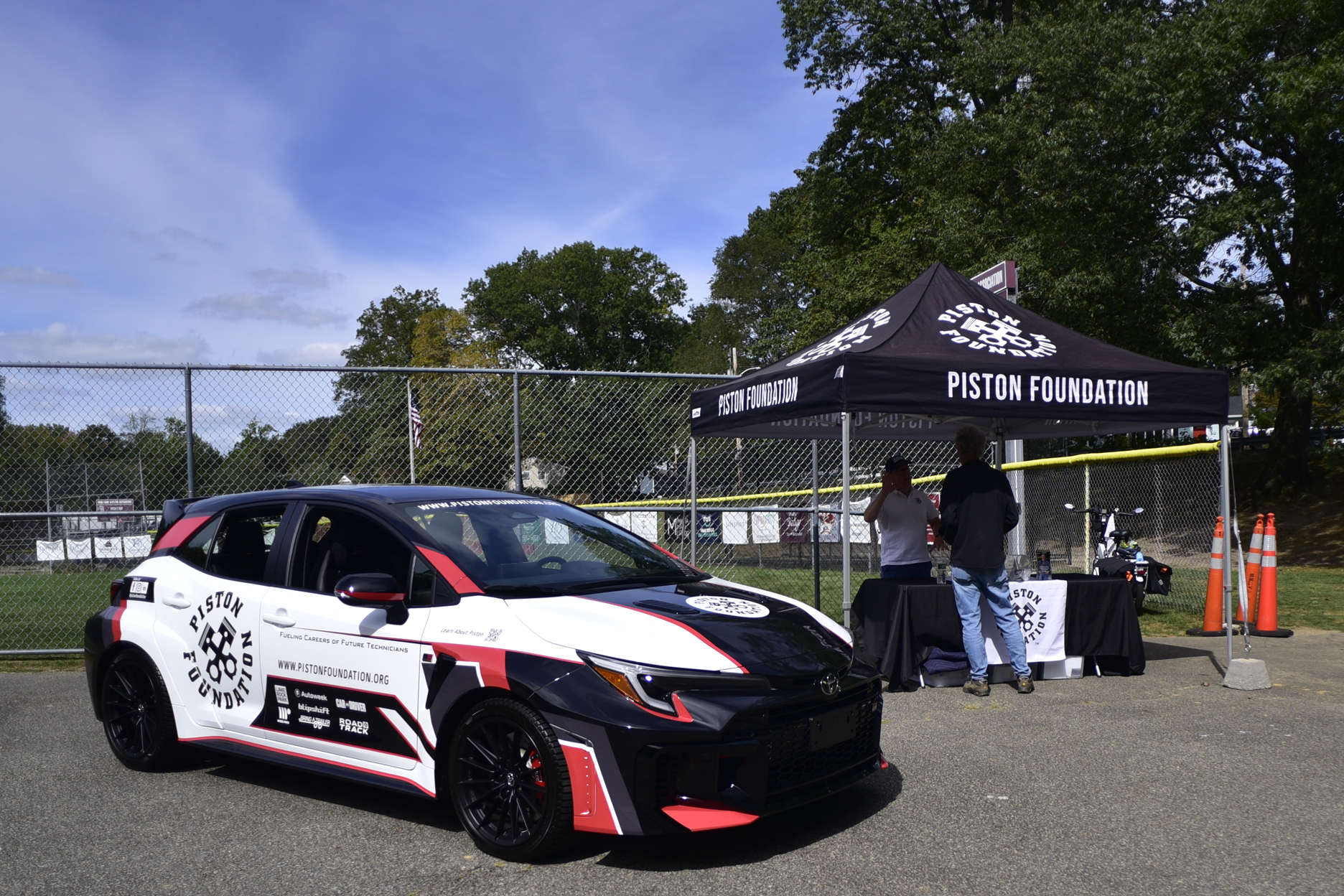 with an information scavenger hunt. Centered on car specific questions, this 20-question quiz encouraged children to interact with the classic cars on display and the car owners.
with an information scavenger hunt. Centered on car specific questions, this 20-question quiz encouraged children to interact with the classic cars on display and the car owners.
The presence of Mr. Jeff Mason, President of the non-profit Piston Foundation offered special benefit for high school age attendees and parents. Mr. Mason was there to discuss scholarship opportunities and apprenticeship programs in fields related to classic car restoration. The Piston Foundations stated mission is to bring more people into the collector car industry and help them build rewarding, successful careers.
By 8:30 am the show field had taken shape with cars arranged around a central array consisting of the Oldsmobile, Pope/Hartford, Model T, Cadillac Coupe deVille and 1956 Continental MkII. The site offered excellent spacing for students to view, photograph and sit in all vehicles. And a wealth of viewing, photographing and sitting would take place.
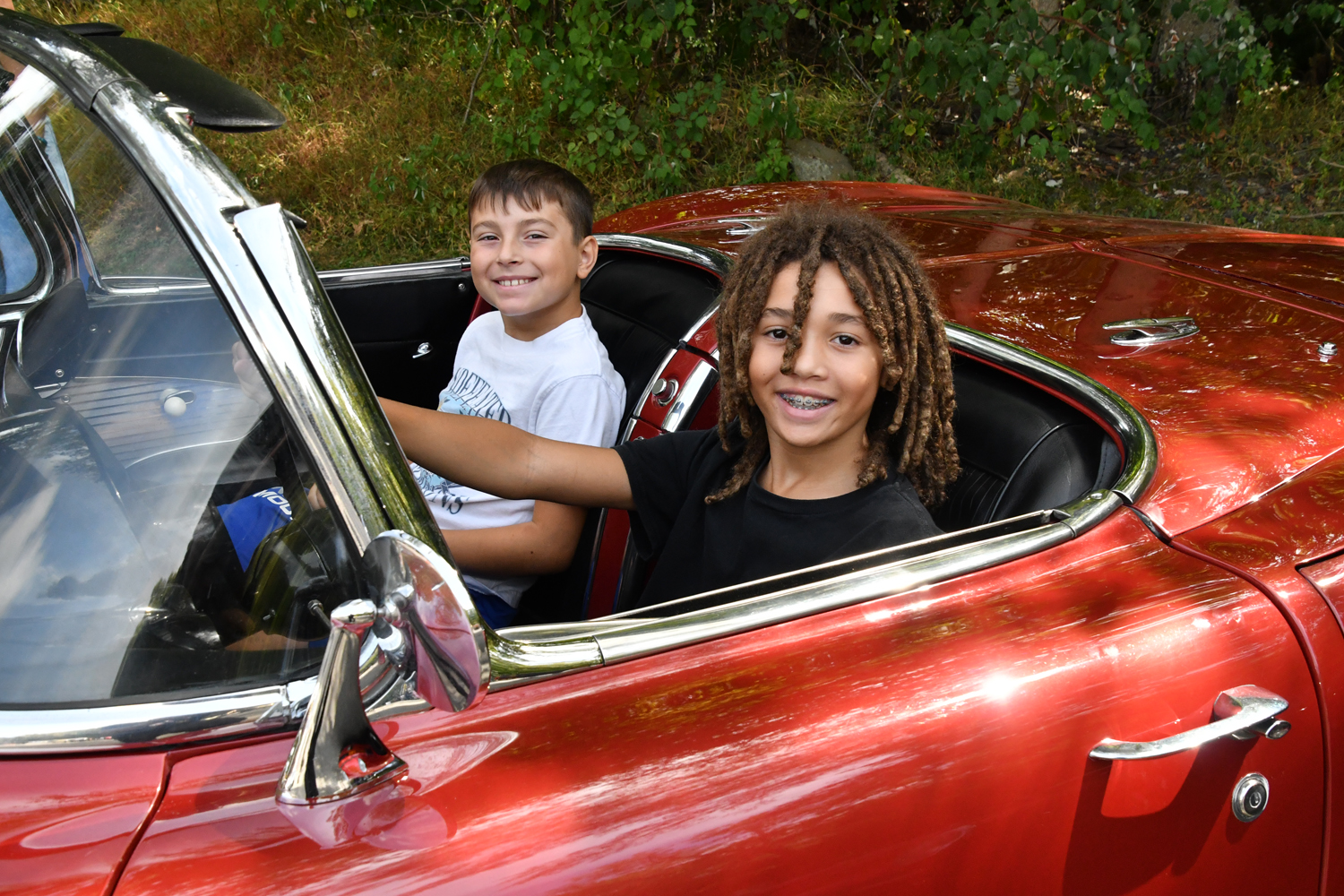
By 9:00 am the judging class participants had taken their seats. 9:30 am saw the service window of the Pop Empanada food truck rattle open freeing mouth watering smells to perfume the air. 10:00 am show time, the display field came alive. For me, a most rewarding experience presented itself when a child approached with an adult in tow. Yes adult in tow, I mean that and not the other way around. Each adult, a parent, would introduce themselves and explain that their child had attended my presentation and insisted on being here. Parents expressed delight at the opportunity to share an experience driven by their child’s curiosity. And curiosity of young minds fueled the high energy character of the event. Fertile imaginations inspired by new experiences seized opportunities to create adventures of their own.
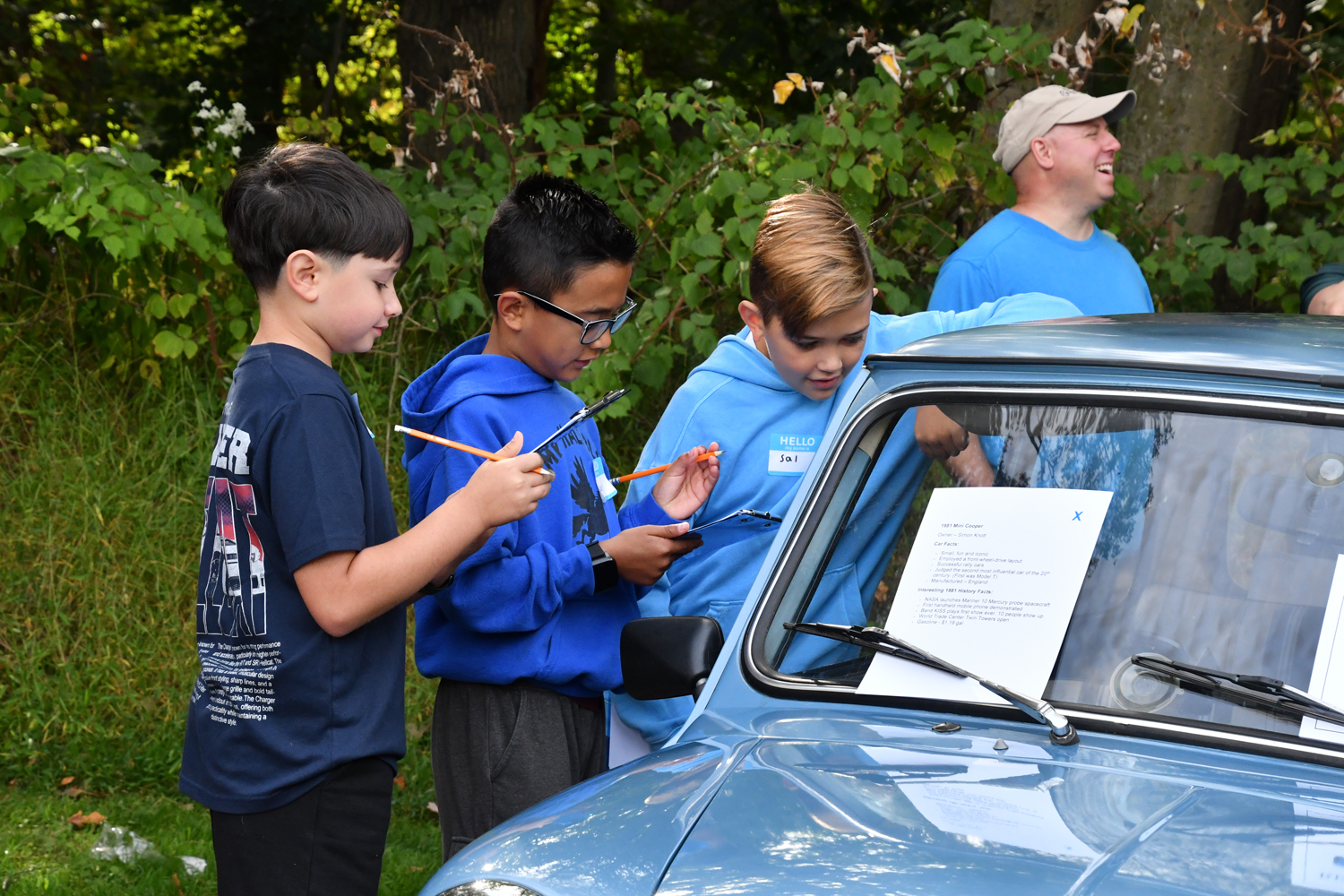
With the show running from 10 am to 2 pm, 11:00 am found the children darting about the show field like bees in a flower patch.Newly minted judges with clip boards circled individual cars as they studiously carried out their judging responsibilities. Mostly grouped in twos or threes, children clutching pens and answer sheets crisscrossed the open field in an honest quest to discover answers. By day’s end Over 50 students got all 20 questions right to earn the Collectible Car Fair “Genius” badge.
At 11:00 am with the energy of the crowd setting a nice vibe, it seemed a good time for the national anthem. The previous week I had attended a car show and with the singing of the national anthem, I commented to myself that this rendition certainly ranked as one of the finer recordings I had heard. It was then that I glanced at the A-V tent and saw that a young woman was delivering the anthem live. She was great. After that show a town official asked if I would like her to sing at the Collectible Car Fair. Absolutely! A week later, on the show field poised with the microphone in her hand, the A-V tech informed her that no music was available to accompany her. Her response, “All good, I’ll do it a cappella.” She nailed it. A big shout out goes to songstress Viana Harley, a student at Park Ridge High School.
Now with the event in full swing, I watched a bevy of students drawn to the Model T. 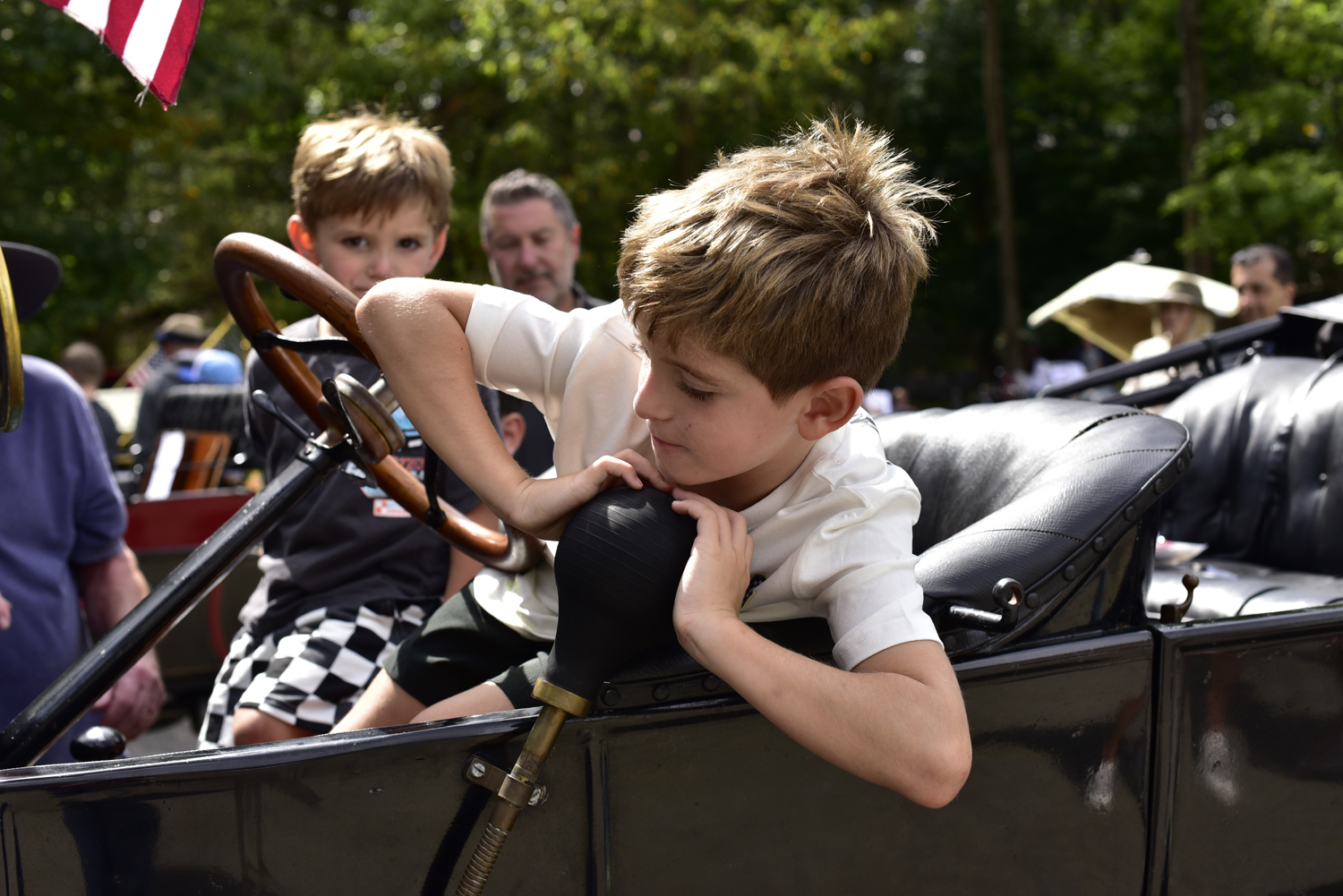 Sitting tall and proud children fired questions at Glenn, the knowledgeable owner. They found the need for a hand crank start especially fascinating and the squeeze bulb horn proved irresistible. My Corvette drew admirers but my favorite asked if he could sit in it. Once in, he gripped the wheel with both hands and made the best “I am doing 100 mph and loving it” face. Interestingly a major source of comment in the Corvette was the dashboard mounted location of the rearview mirror.
Sitting tall and proud children fired questions at Glenn, the knowledgeable owner. They found the need for a hand crank start especially fascinating and the squeeze bulb horn proved irresistible. My Corvette drew admirers but my favorite asked if he could sit in it. Once in, he gripped the wheel with both hands and made the best “I am doing 100 mph and loving it” face. Interestingly a major source of comment in the Corvette was the dashboard mounted location of the rearview mirror.
Whether a VW Beetle, Porsche 911, Chevrolet Greenbrier or Corvair Corsa, the rear engine air cooled configuration drew significant attention. Actual more attention grabbing than the engine in the rear, was that lifting the hood revealed no engine in the front.
The 1958 Isetta with it unusual front opening driver’s door, the DeLorean with its gullwing doors and Doc Brown connection, and the Mini because of its, well, Mini-ness all drew much attention for their quirkiness. Plum Crazy drew rave reviews from those for whom color mattered.
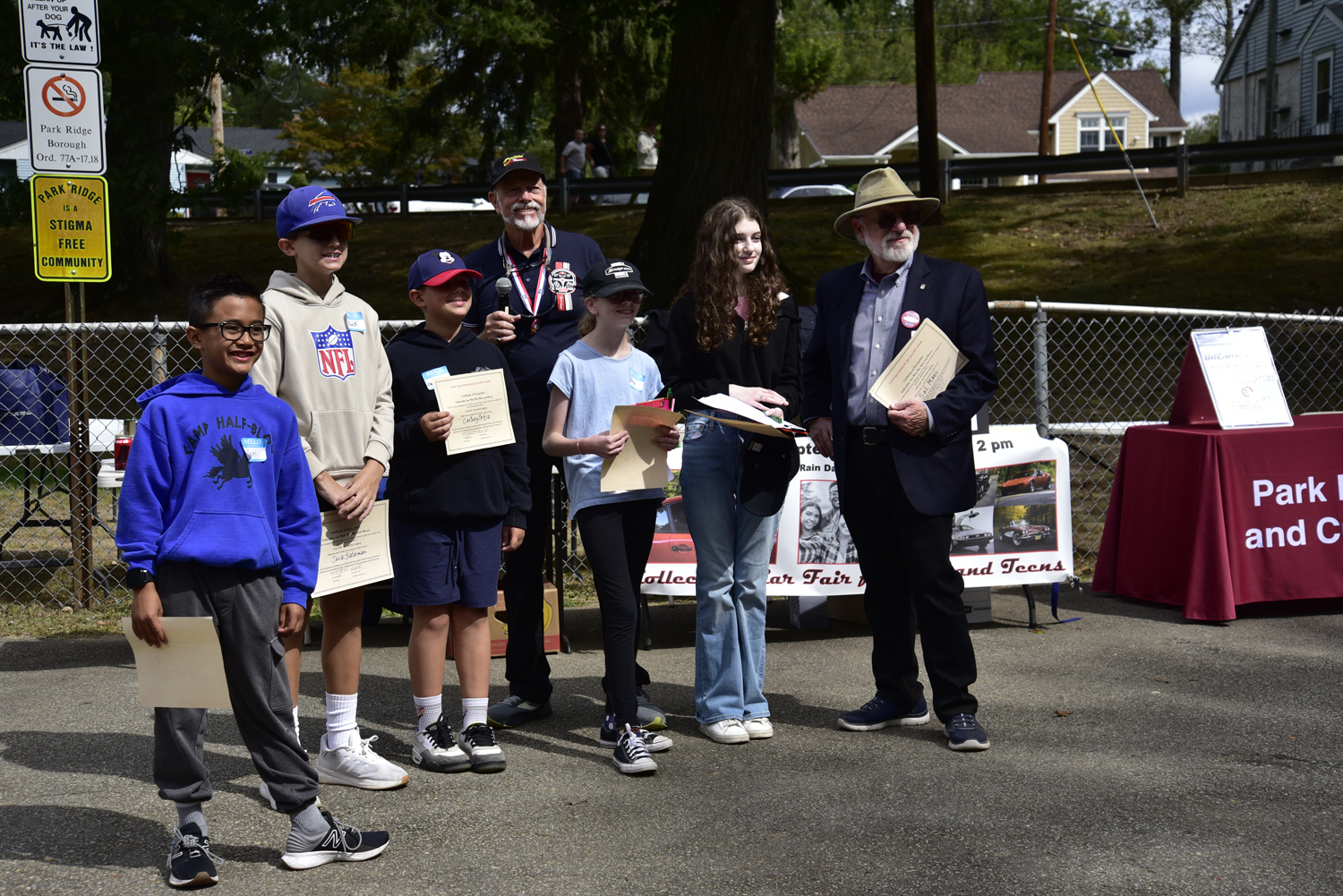
As the day moved on the tabulation of the results from our battery of rookie judges came in with admirable results. They performedextremely well considering the stiff challenge presented by the very broad field of cars they faced. Apparently Chief Judge Bob Austin had a bright class with whom to work. At that point all of the young judges received a certificate of accomplishment before Bob announced the judging tally.
Group 1 – The Early Years
1st – 1956 Continental MK II
2nd – 1915 Ford Model T
3rd – 1956 Cadillac Coupe DeVille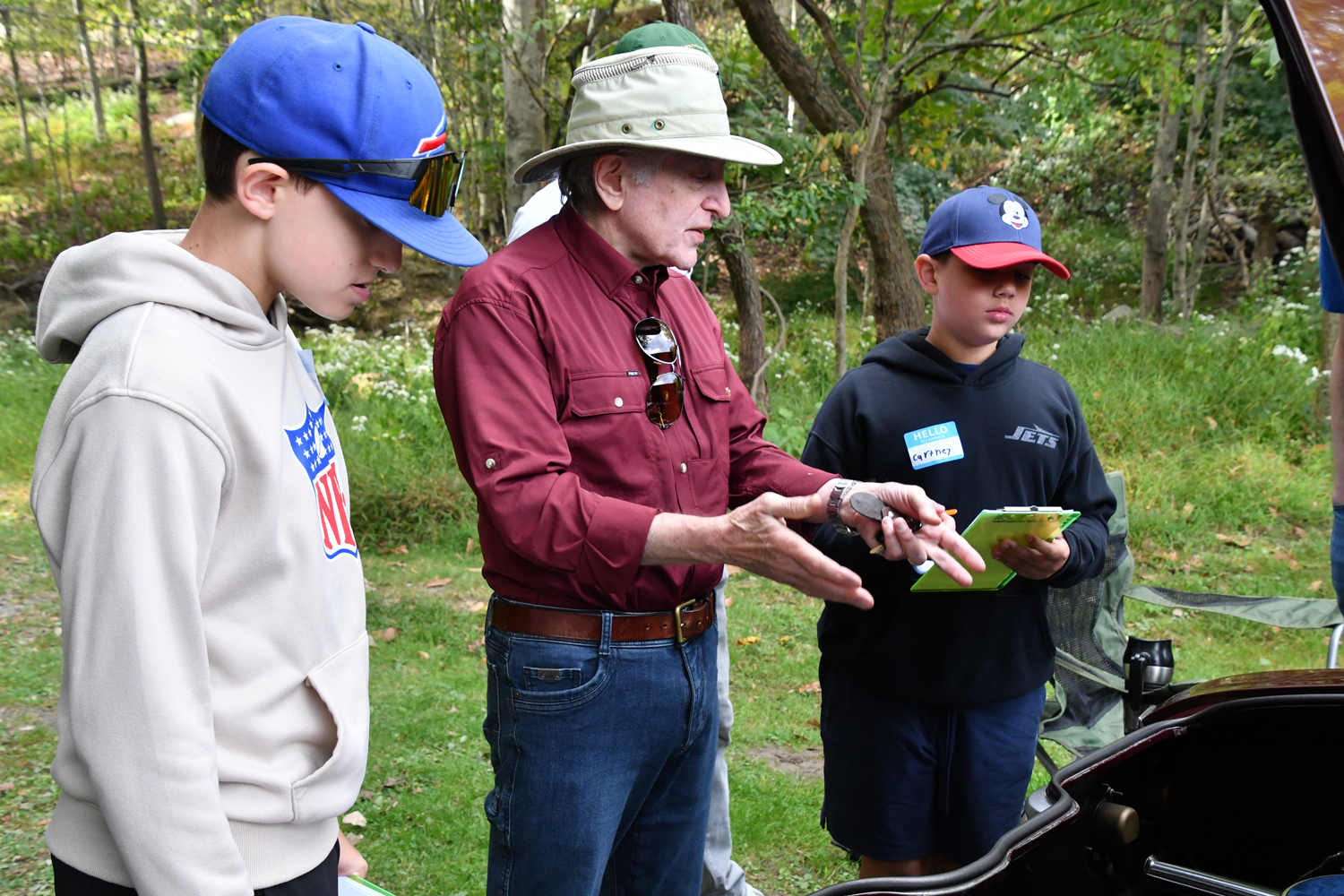
Group 2 – The Swinging 60s
1st – 1956 Chevrolet Corvair Corsa
2nd – 1965 Mustang
3rd – 1961 Corvette
Group 3 – Cars that Defined the Driver
1st – BMW 850CSi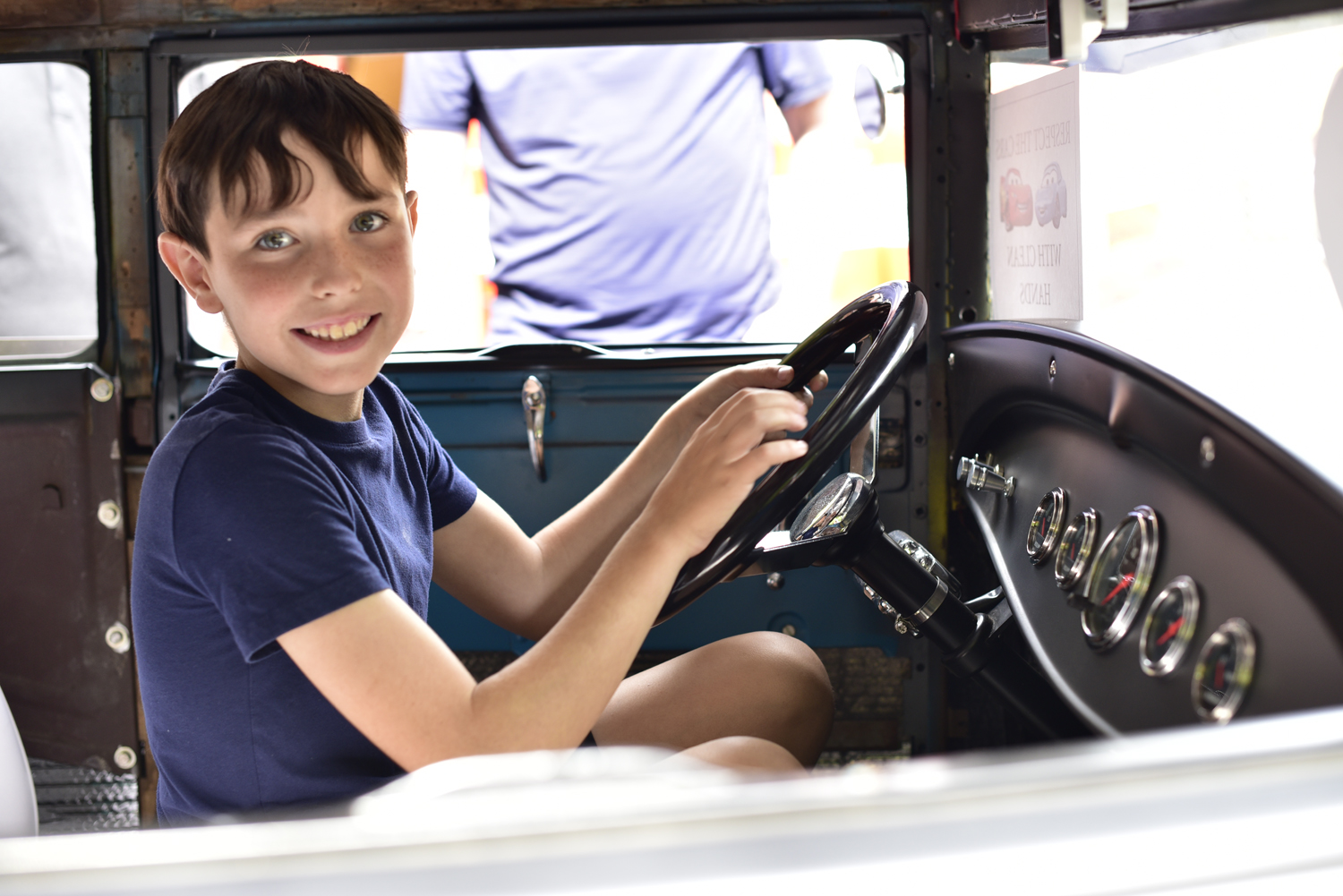
2nd – 1996 Dodge Viper
3rd – 1988 BMW E30M
With all attendees now gone and a hot sun still high in the sky, car owners and event volunteers convened one last time before slowly gathering themselves in preparation to depart. All there shared smiles and stories derived from the day’s events. All agreed that it was worth it.
Interactive classic car events such as the “Collectible Car Fair for Kids and Teens” represent the extension of a critical lifeline to a future clearly in question. Will tomorrow enjoy a healthy collector car experience? Will our passion transfer to our progeny? The answer resides in what we do today to invite and entice the future to share our joy.
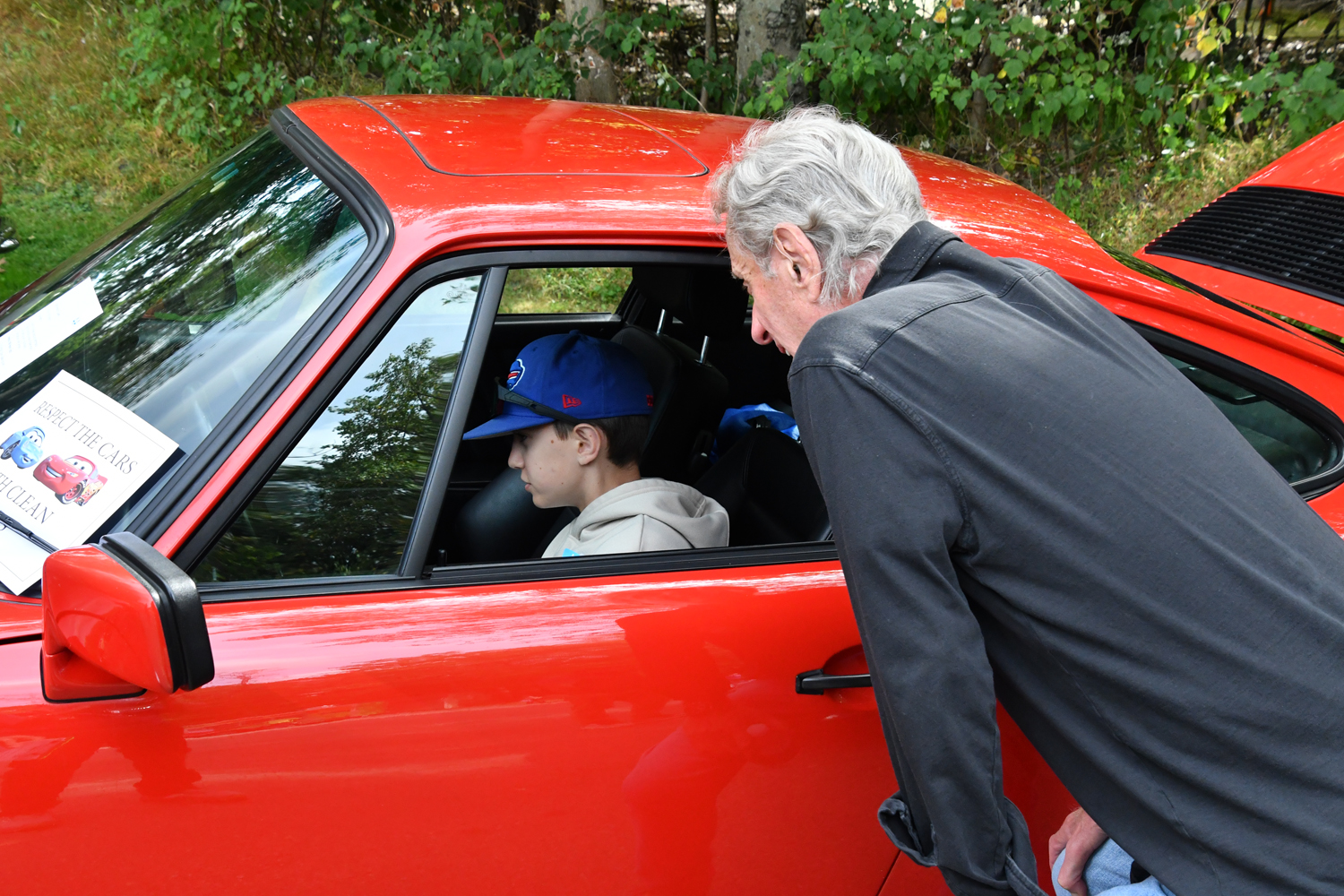
Unfortunately, I have found that some collector car gatherings are a sedentary affair with too many guys my age circled like covered wagons in lawn chairs and shooing kids away from the cars. At this point in time such a defensive mindset serves to “protect” the future from embracing what we love. We as car enthusiasts derive our passion from experiencing our cars. To quote Dr. Fred Simeone, “The greatest gift of the Industrial Age is the automobile.” It is imperative that we share our passion with the generations to come. Unfortunately, many among us view that thought with trepidation.
Possessing a rightful concern that kids will damage a treasured car can inspire a certain protective instinct. Having worked the big new car shows such as the New York Auto 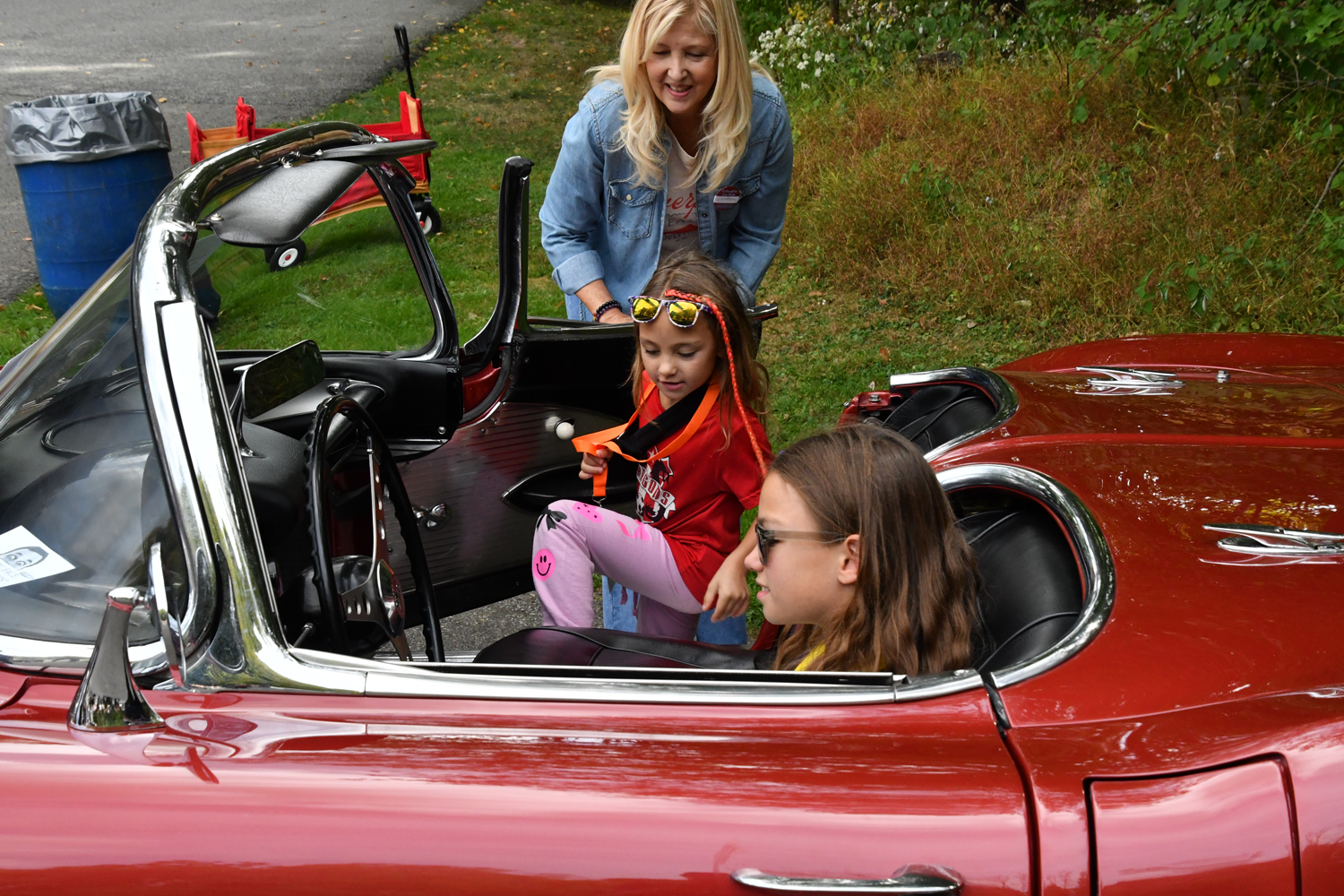 Show, I know the damage inflicted by bad kids with evil intent. That unsupervised environment differs profoundly from the local events most of us populate. Experience from Collectible Car Fairs 1 and 2 has shown kids to be respectful and appreciative. Do they need to be monitored? Yes. They may not know how to interact with a classic car. That is certainly something we as car enthusiasts can share in a friendly manner. For my 2 Collectible Car Fairs and the Autism event described in the last Drivin News story (Classic Autos and Autism, A Shared Journey to Betterment) I have brought the 1961 Corvette that I have had since 1967. After 50 years of ownership, I conducted a major restoration. It has been featured in Hemmings publication Muscle Machines. I am very protective. I have also realized my greatest gift as an automobile enthusiast is to employ my car as a vehicle (Double meaning intended) to engage those who will carry on my passion when their turn arrives.
Show, I know the damage inflicted by bad kids with evil intent. That unsupervised environment differs profoundly from the local events most of us populate. Experience from Collectible Car Fairs 1 and 2 has shown kids to be respectful and appreciative. Do they need to be monitored? Yes. They may not know how to interact with a classic car. That is certainly something we as car enthusiasts can share in a friendly manner. For my 2 Collectible Car Fairs and the Autism event described in the last Drivin News story (Classic Autos and Autism, A Shared Journey to Betterment) I have brought the 1961 Corvette that I have had since 1967. After 50 years of ownership, I conducted a major restoration. It has been featured in Hemmings publication Muscle Machines. I am very protective. I have also realized my greatest gift as an automobile enthusiast is to employ my car as a vehicle (Double meaning intended) to engage those who will carry on my passion when their turn arrives.
ADDITIONAL PHOTOS BELOW
Images Courtesy of Burton Hall and Keli Dougherty

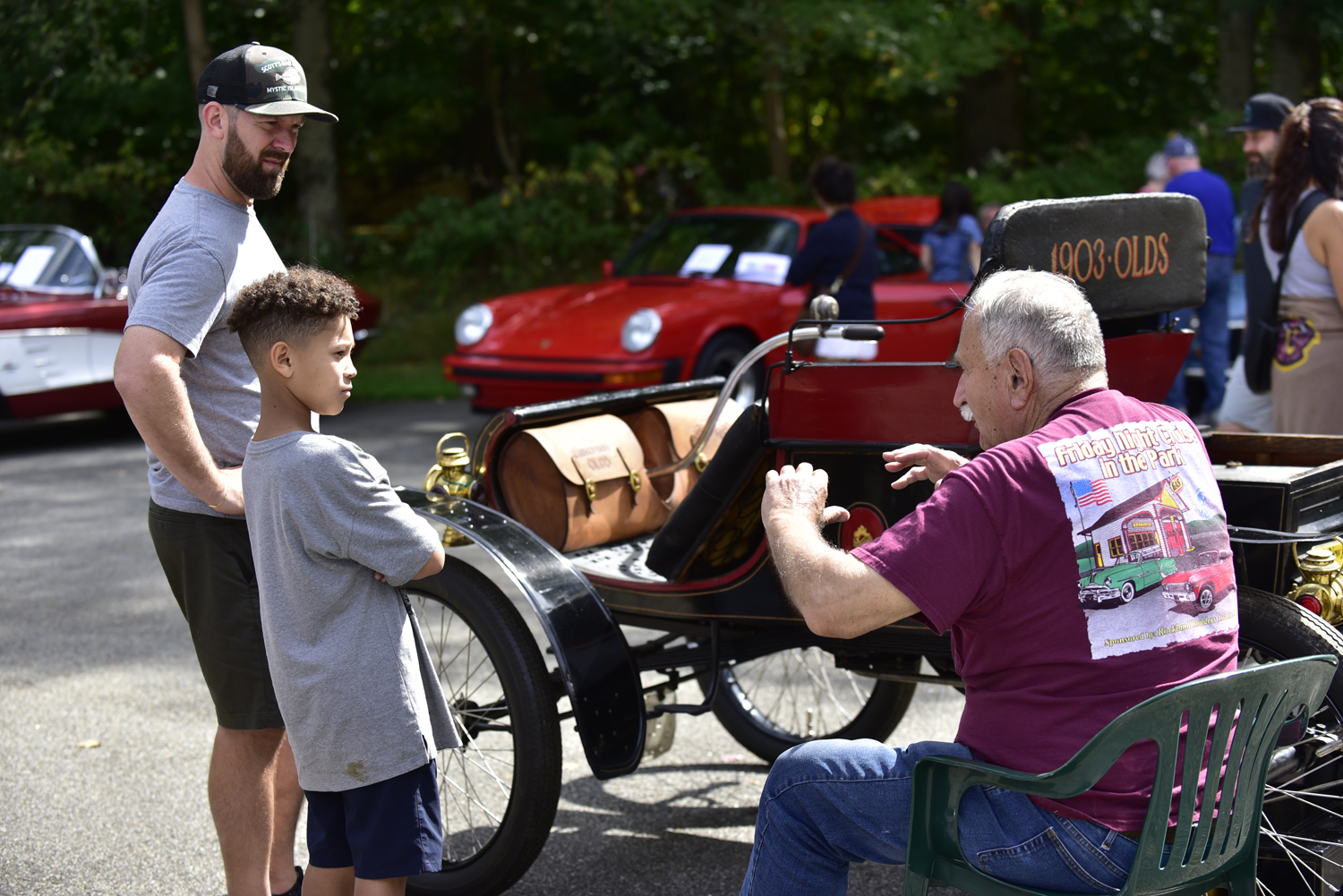
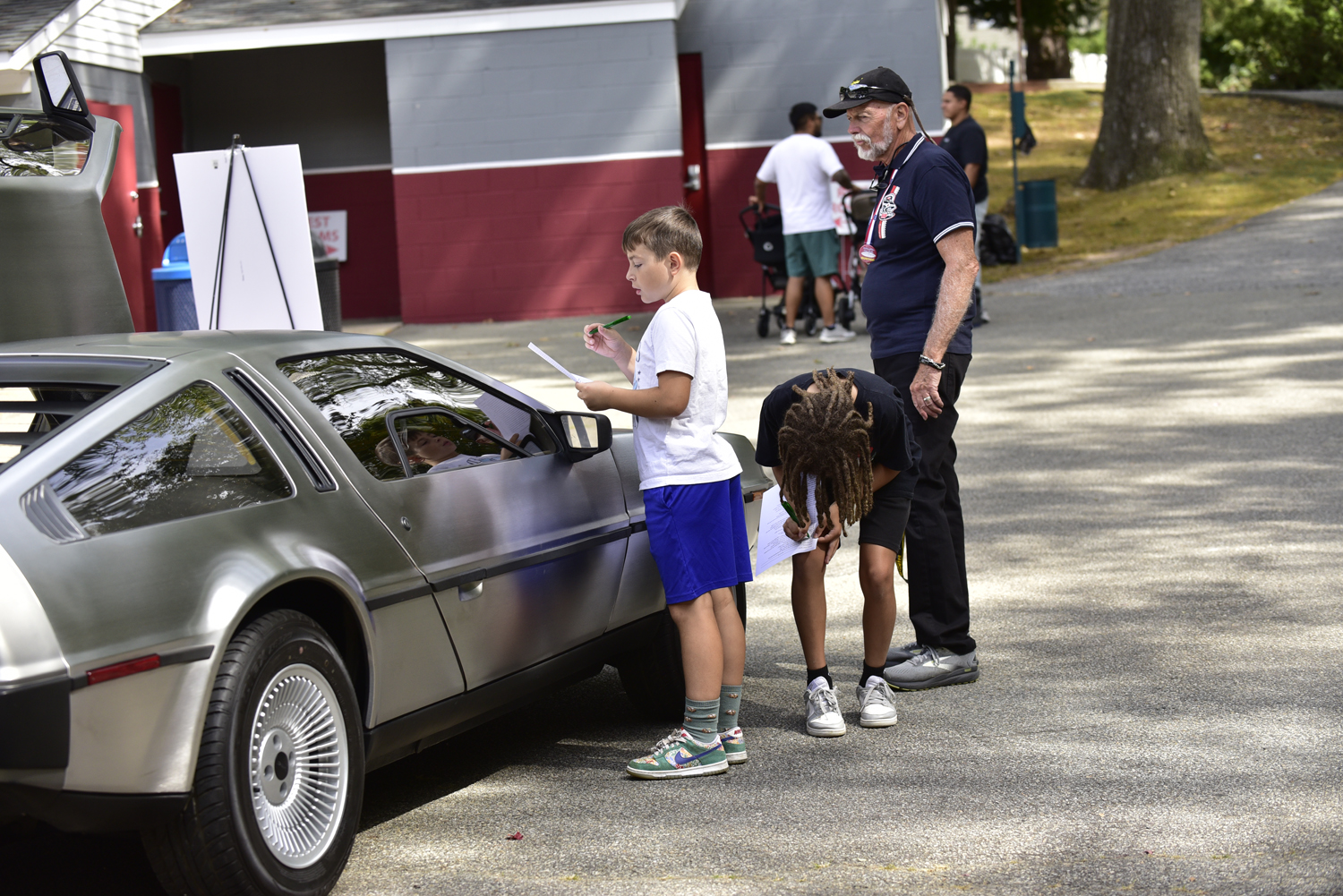

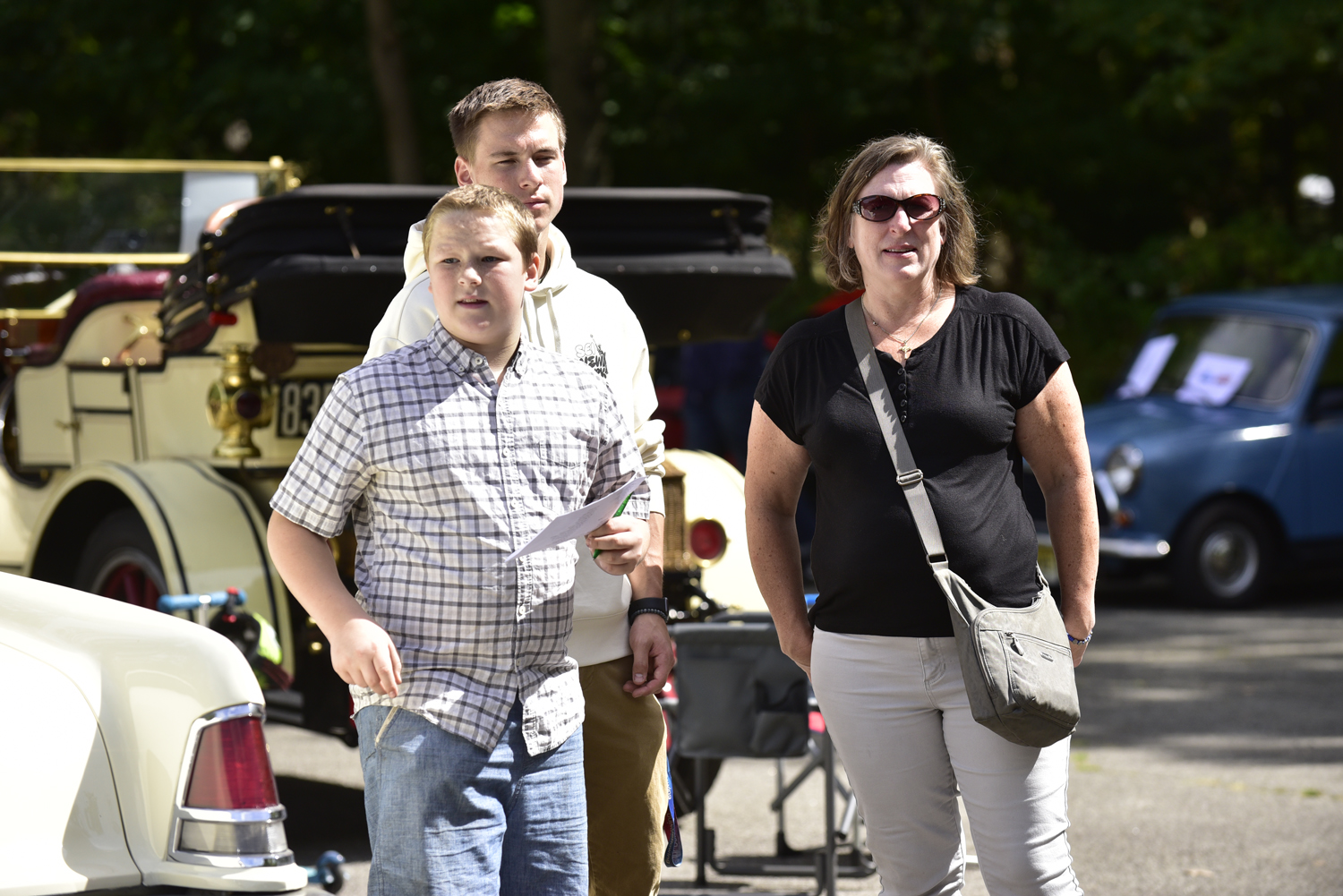
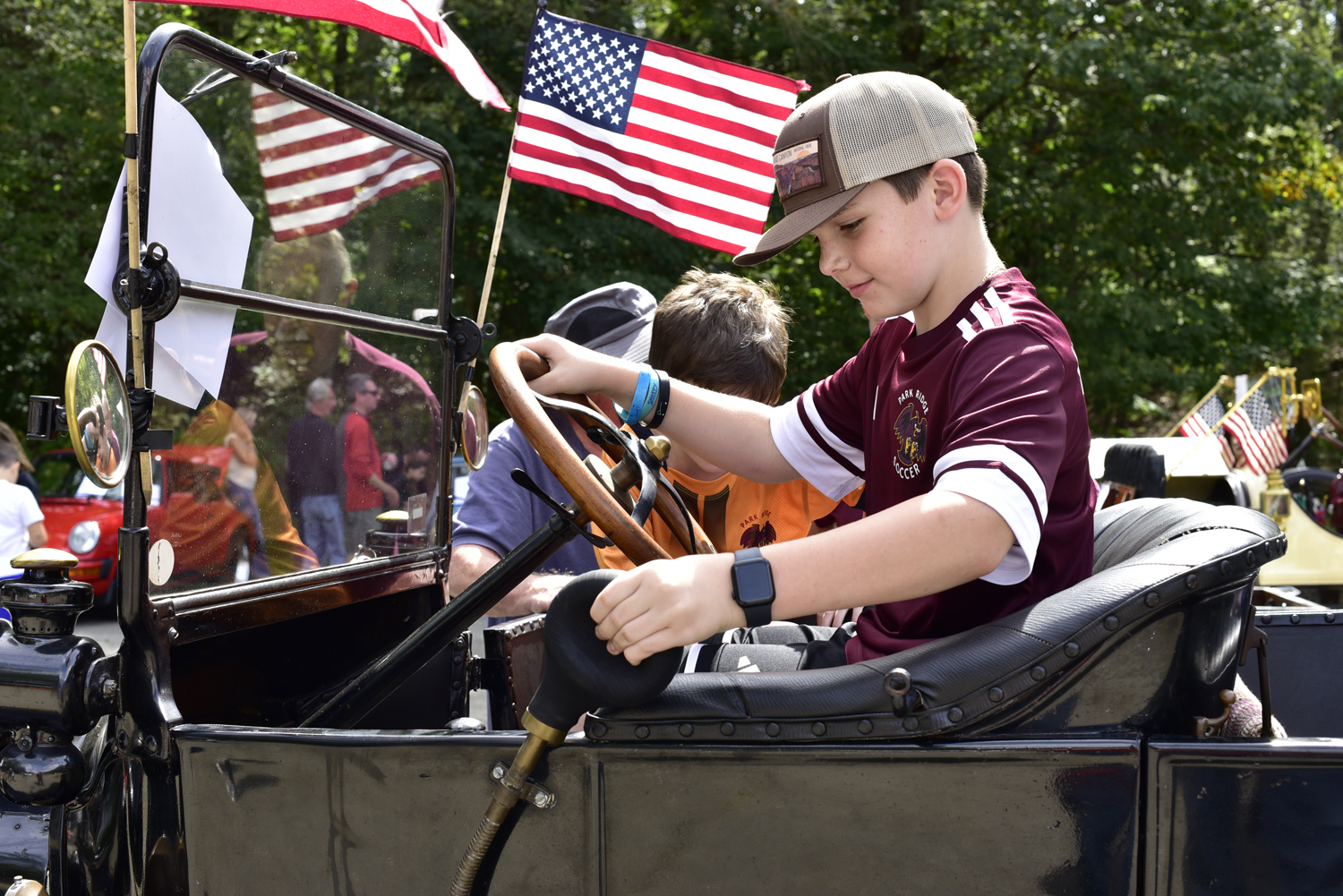
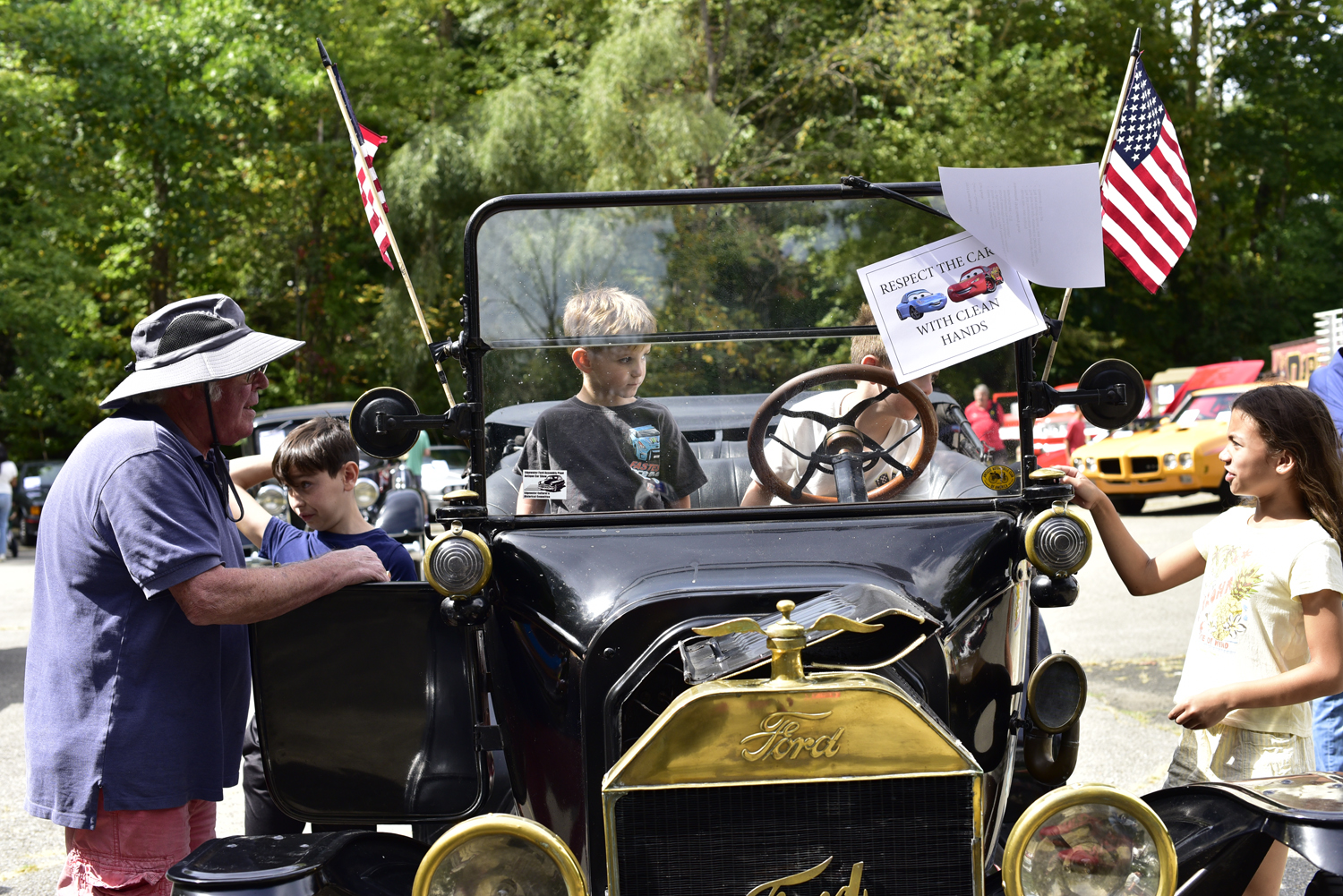
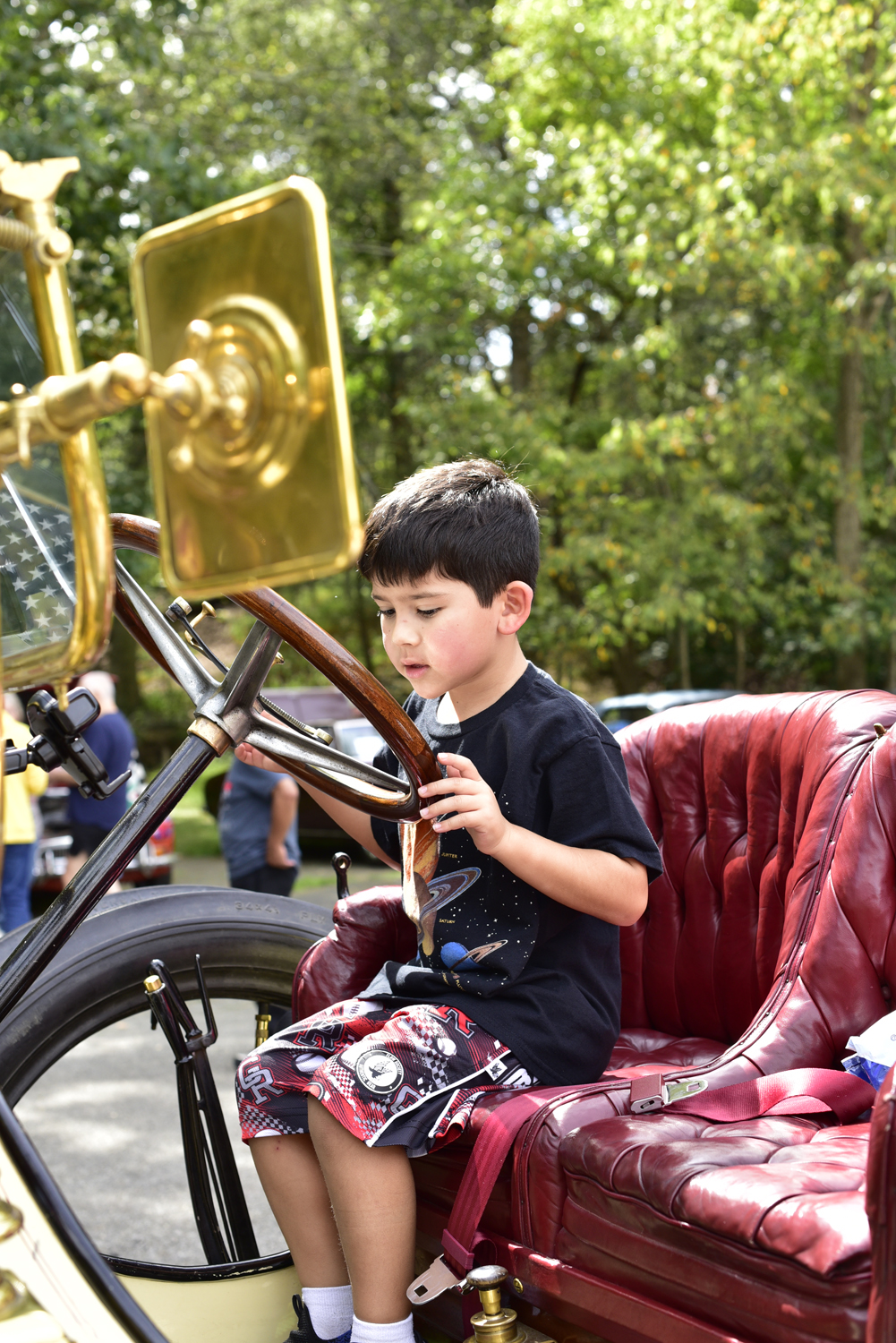
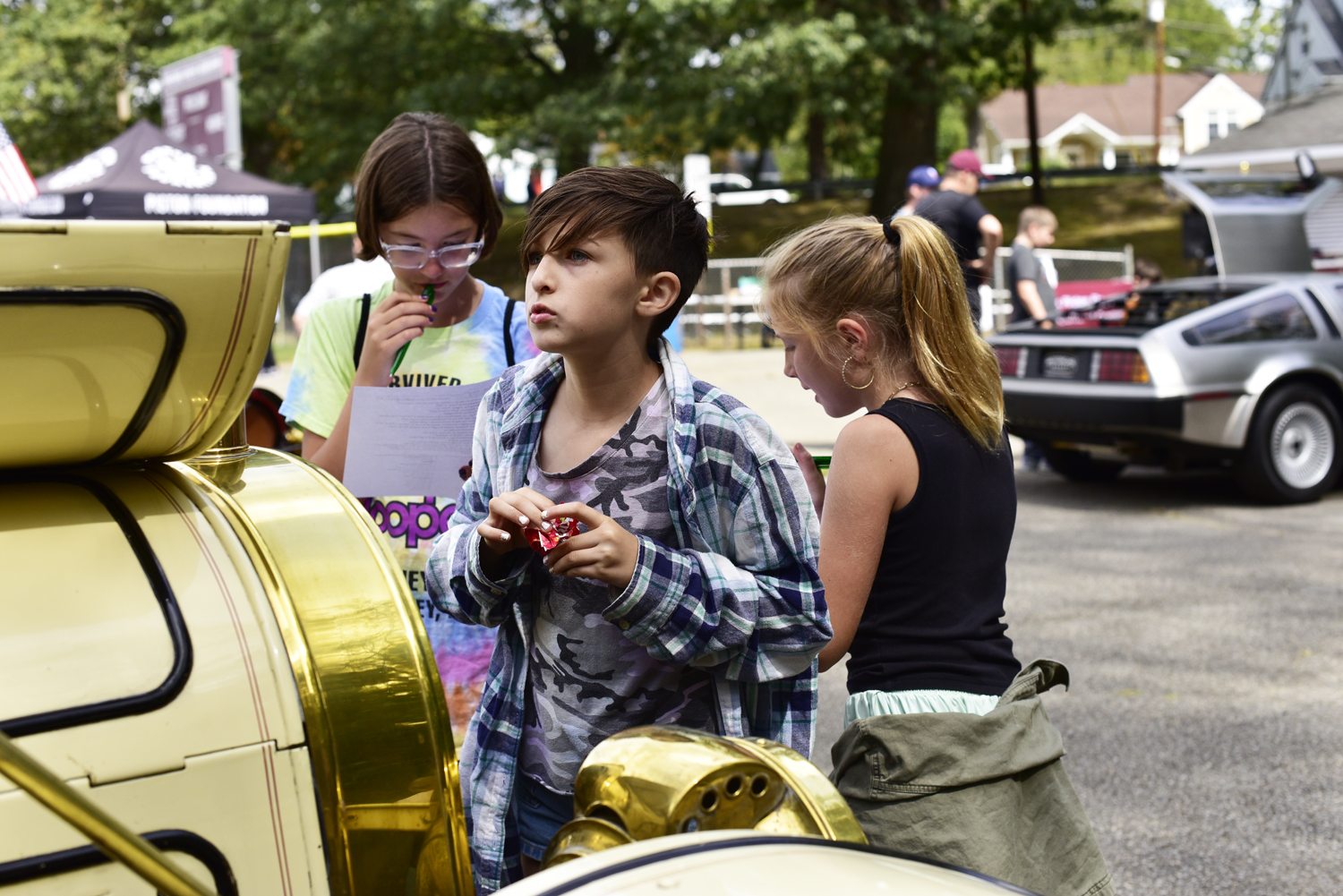
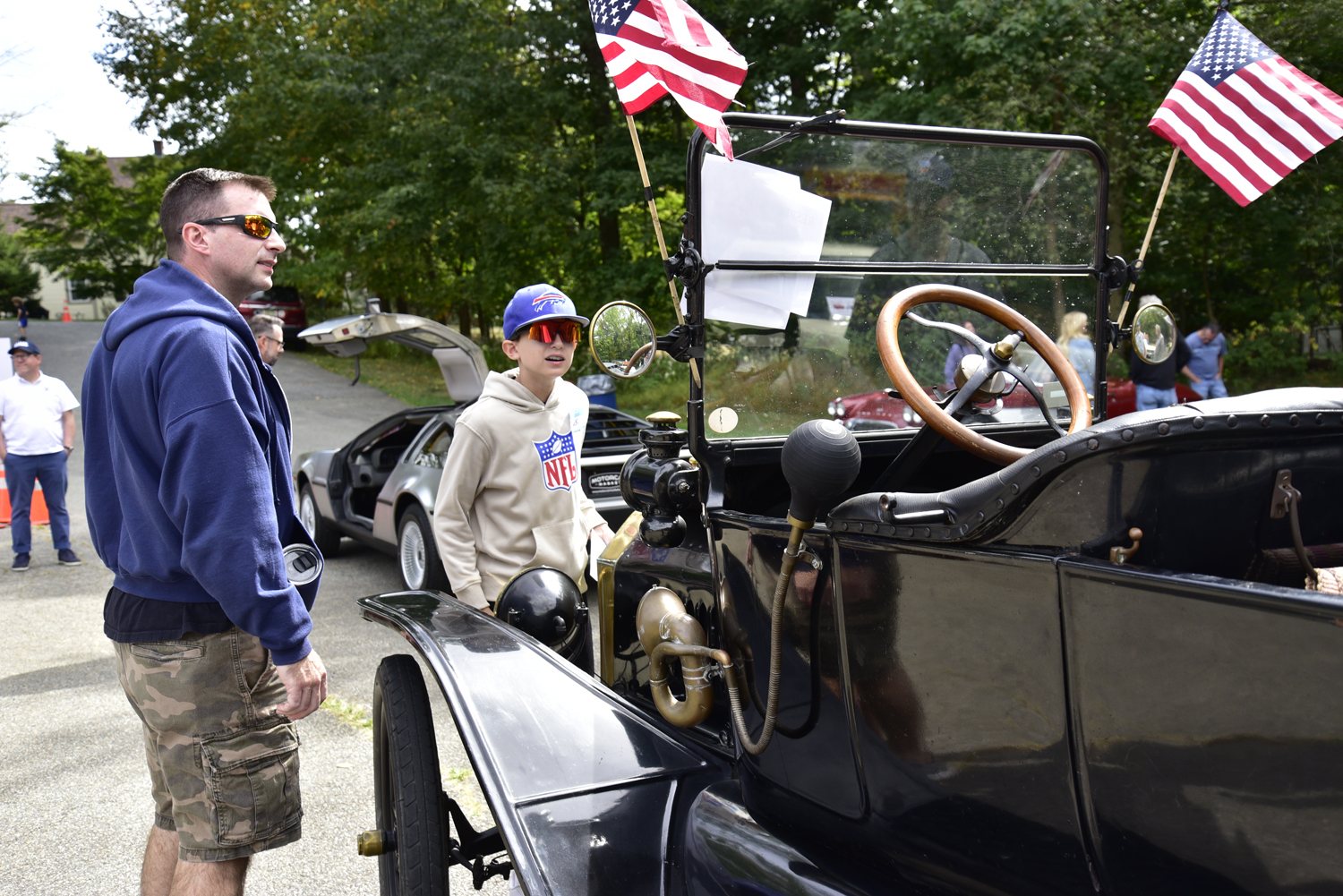
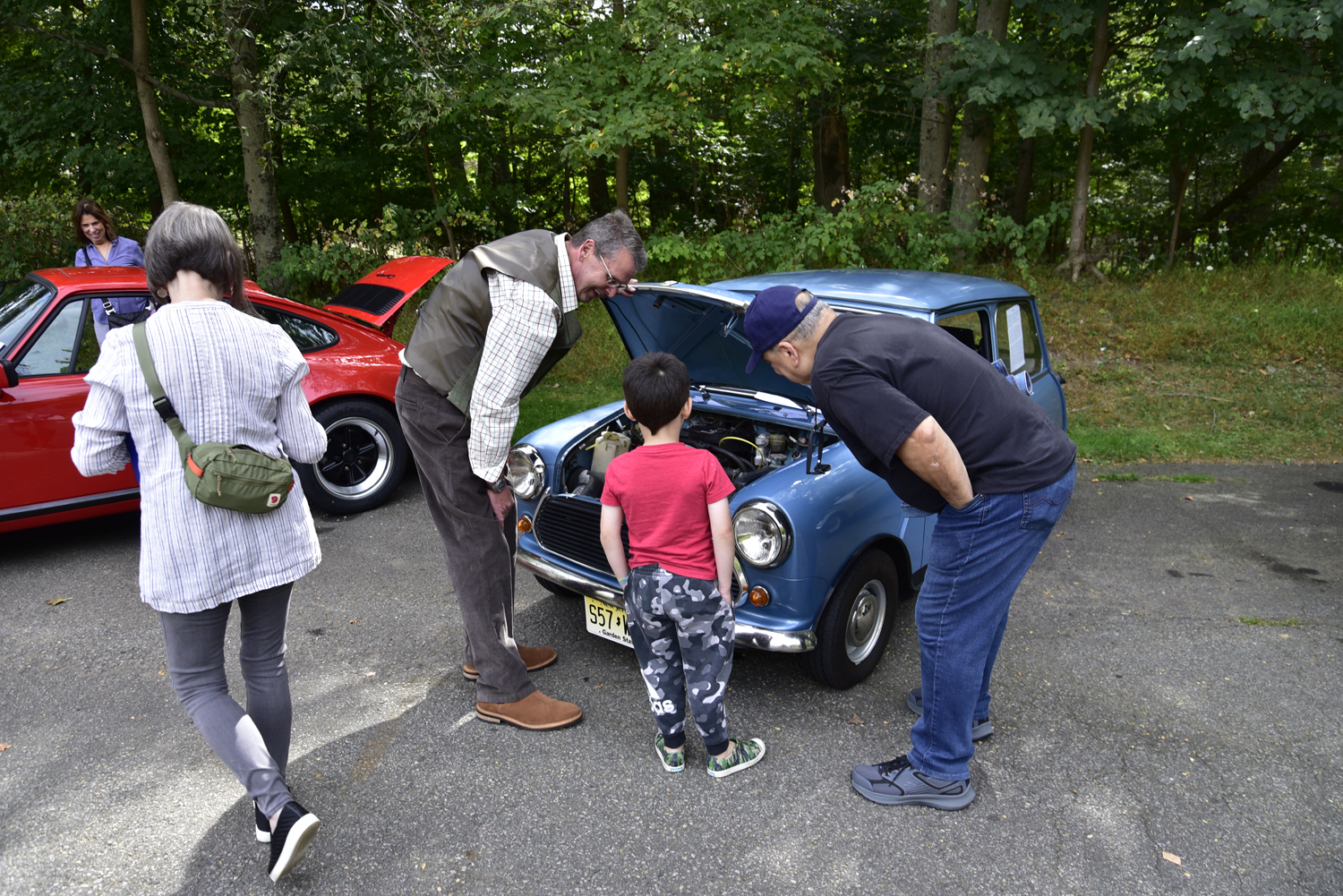
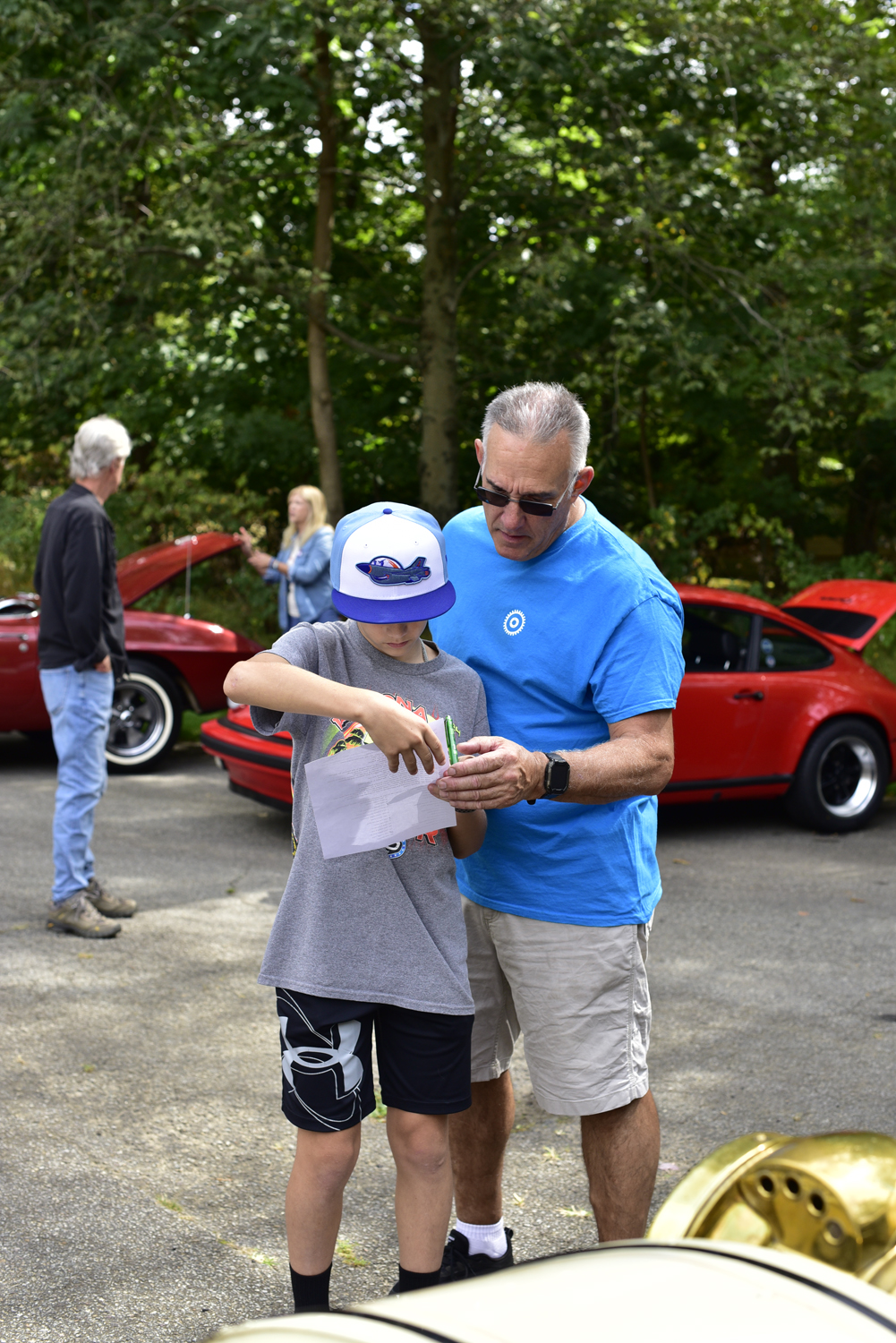
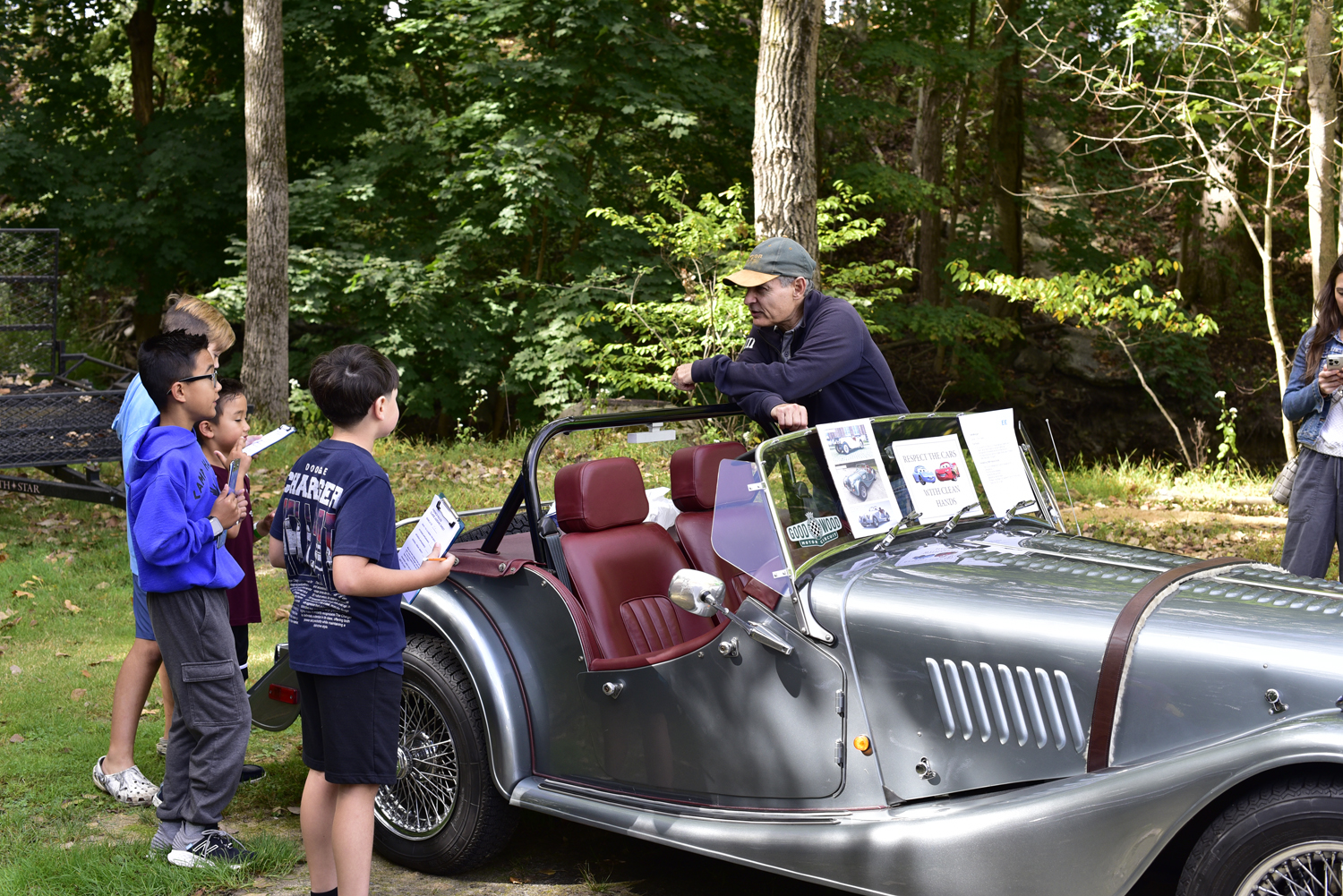
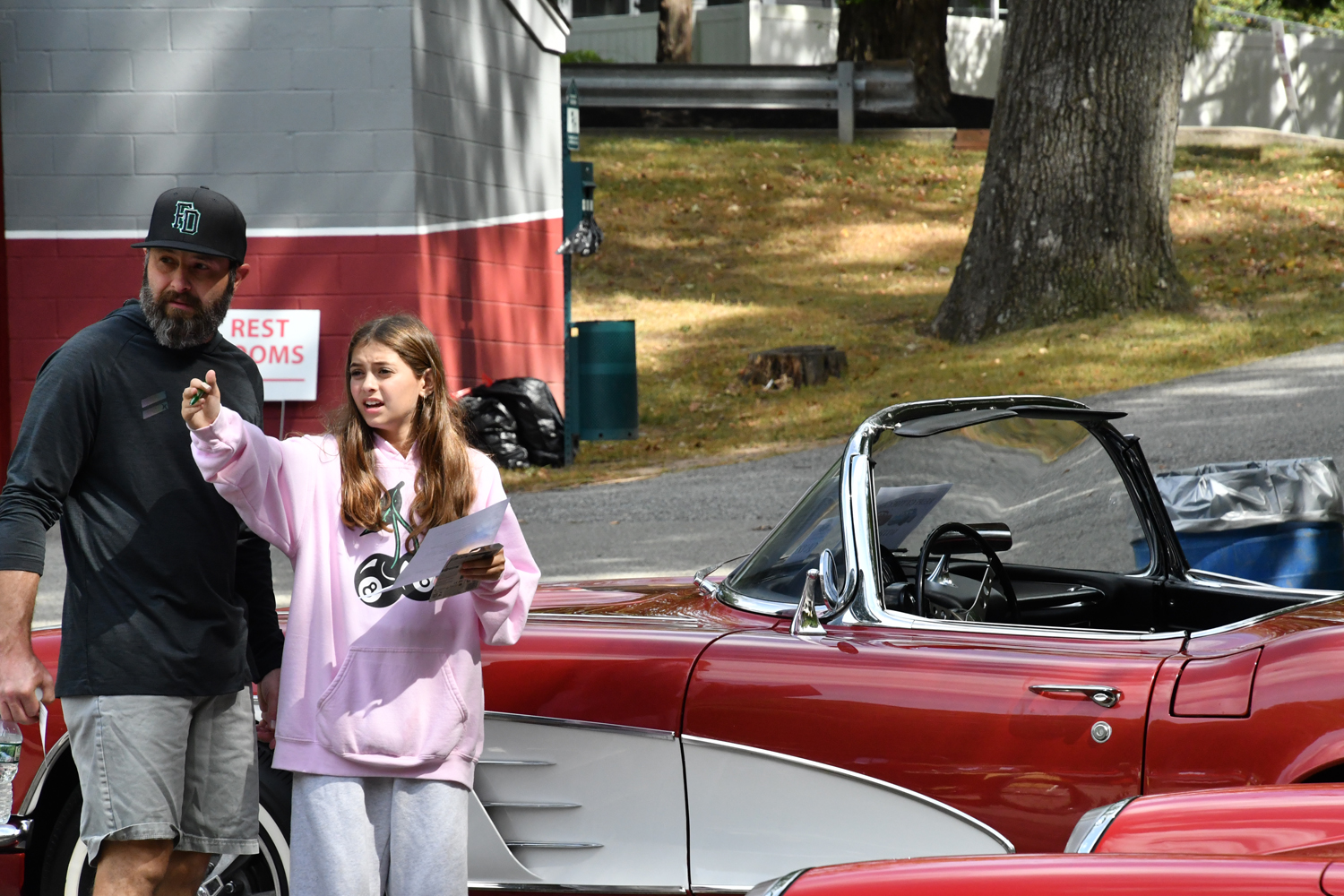
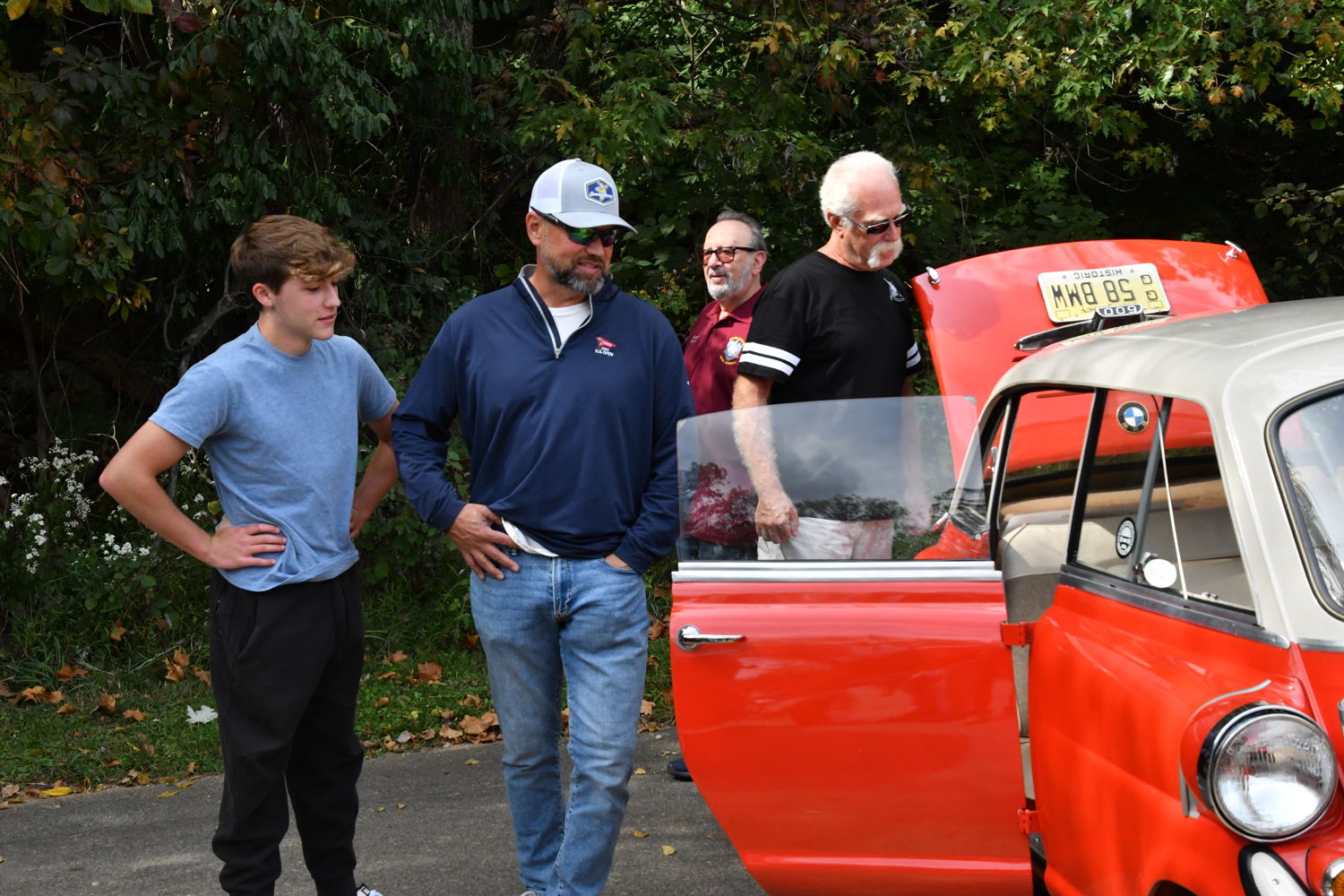
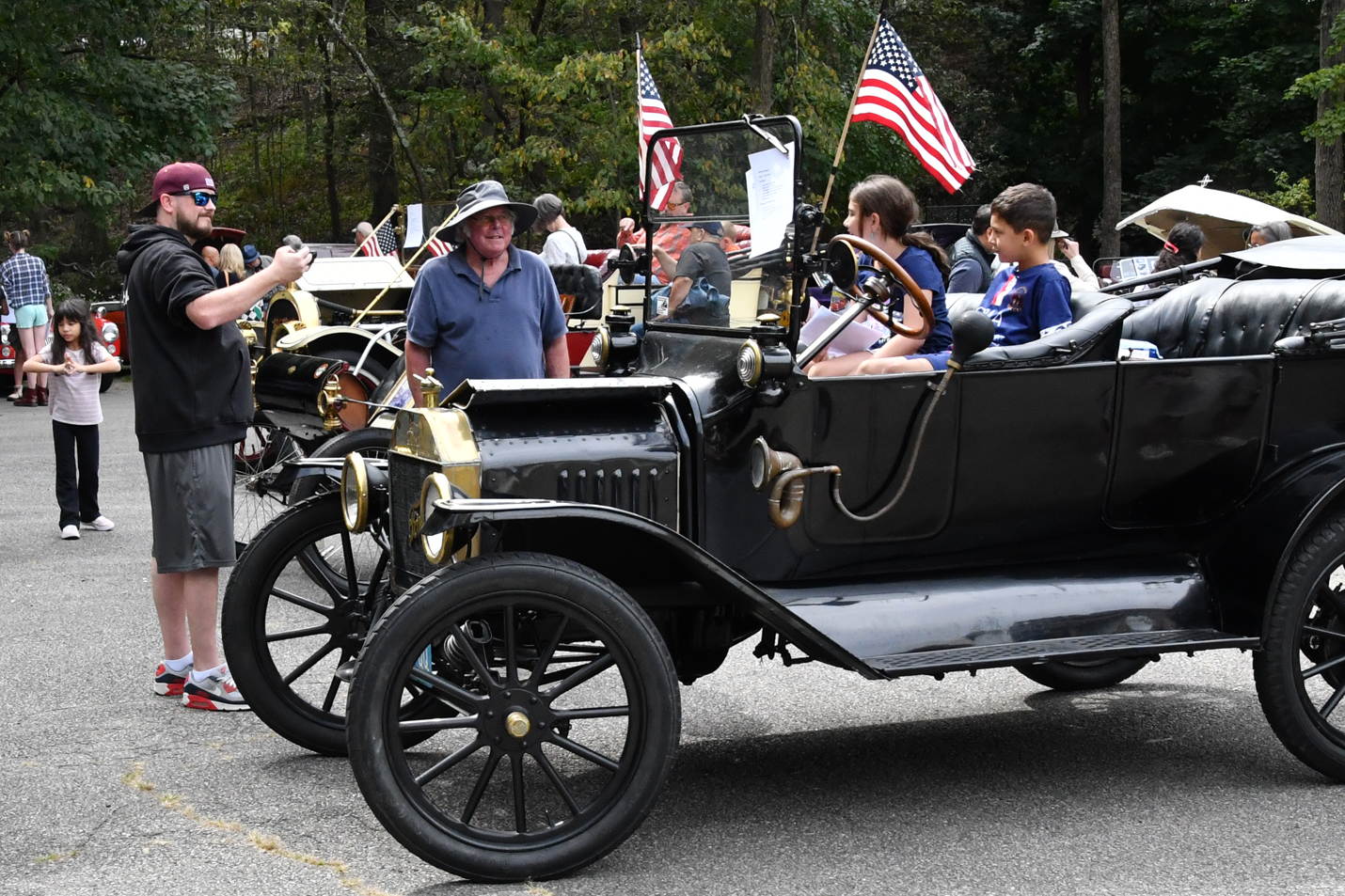
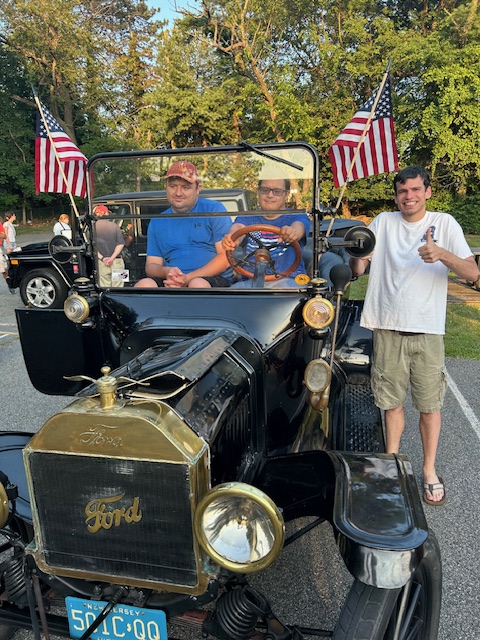
 The “Car Show” represented a unique activity in the ongoing effort to create engaging monthly social events. In this setting these young adults could engage with the classic cars and the owners in a social setting with familiar faces. In so doing they could develop the social skills necessary to improve their quality of life.
The “Car Show” represented a unique activity in the ongoing effort to create engaging monthly social events. In this setting these young adults could engage with the classic cars and the owners in a social setting with familiar faces. In so doing they could develop the social skills necessary to improve their quality of life.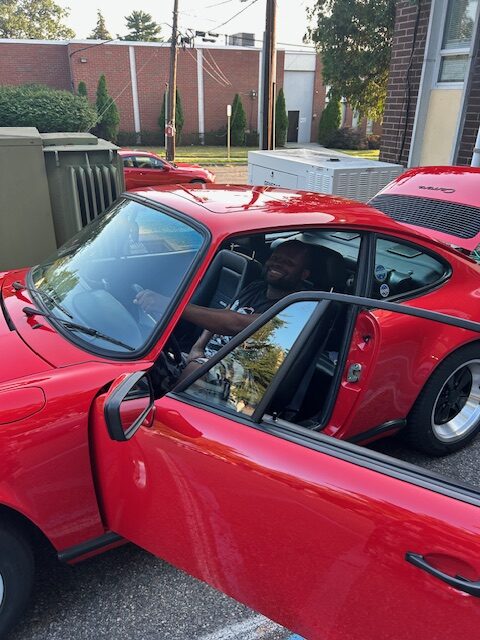 One great example of the conflicting cognitive versus social abilities of clients occurred with Peter, the owner of an especially nice 1986 Guards Red Porsche 911 Carrera and a knowledgeable car guy. One of the clients approached to view Peter’s Porsche. Peter invited the client to take a seat behind the wheel. “Oooohhh nooo,” the young man replied as he retreated from the interaction. A while later the young man returned to ask if he could, indeed, sit in the Porsche. Peter guided him behind the wheel while taking his place in the passenger seat. Peter in delightfully describing his shock says, “This young man spoke so knowledgeably about Porsches I was completely blown away. I never expected that.”
One great example of the conflicting cognitive versus social abilities of clients occurred with Peter, the owner of an especially nice 1986 Guards Red Porsche 911 Carrera and a knowledgeable car guy. One of the clients approached to view Peter’s Porsche. Peter invited the client to take a seat behind the wheel. “Oooohhh nooo,” the young man replied as he retreated from the interaction. A while later the young man returned to ask if he could, indeed, sit in the Porsche. Peter guided him behind the wheel while taking his place in the passenger seat. Peter in delightfully describing his shock says, “This young man spoke so knowledgeably about Porsches I was completely blown away. I never expected that.”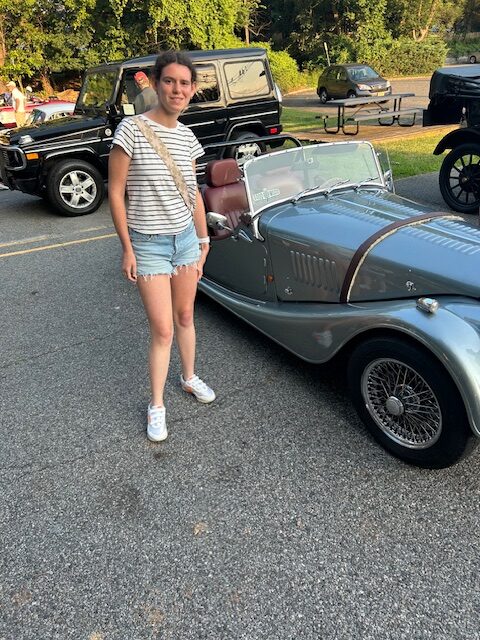 Car-centric activities engaged the clients throughout the evening till the summer sun sank to the horizon. Long shadows signaled that the time had arrived for the show to end. Illuminated in the golden glow of the sweet light cast by a setting sun, the eclectic collection of classic cars individually departed to the cheers of the clients as they gathered to wave goodbye to their new friends.
Car-centric activities engaged the clients throughout the evening till the summer sun sank to the horizon. Long shadows signaled that the time had arrived for the show to end. Illuminated in the golden glow of the sweet light cast by a setting sun, the eclectic collection of classic cars individually departed to the cheers of the clients as they gathered to wave goodbye to their new friends.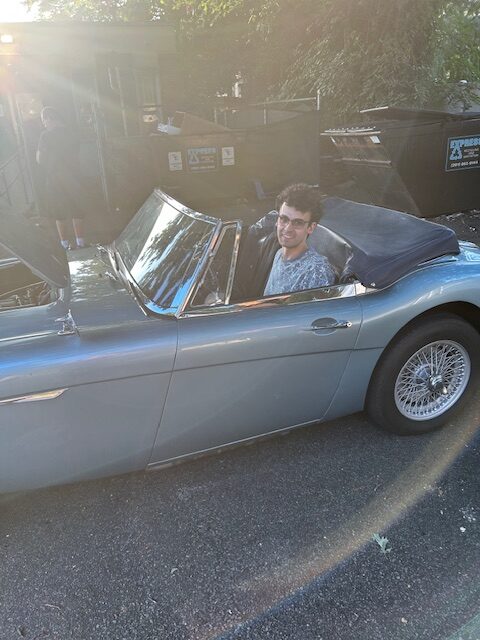 Both Arlene and Kayleigh praised the owners. Arlene said, “Your people were so patient. I watched and saw how some of them kind of stood back and observed. And when a client approached close enough to indicate interest that’s when the owner would slowly make his way over. He would casually go up and say, ‘Do you want to see it?’
Both Arlene and Kayleigh praised the owners. Arlene said, “Your people were so patient. I watched and saw how some of them kind of stood back and observed. And when a client approached close enough to indicate interest that’s when the owner would slowly make his way over. He would casually go up and say, ‘Do you want to see it?’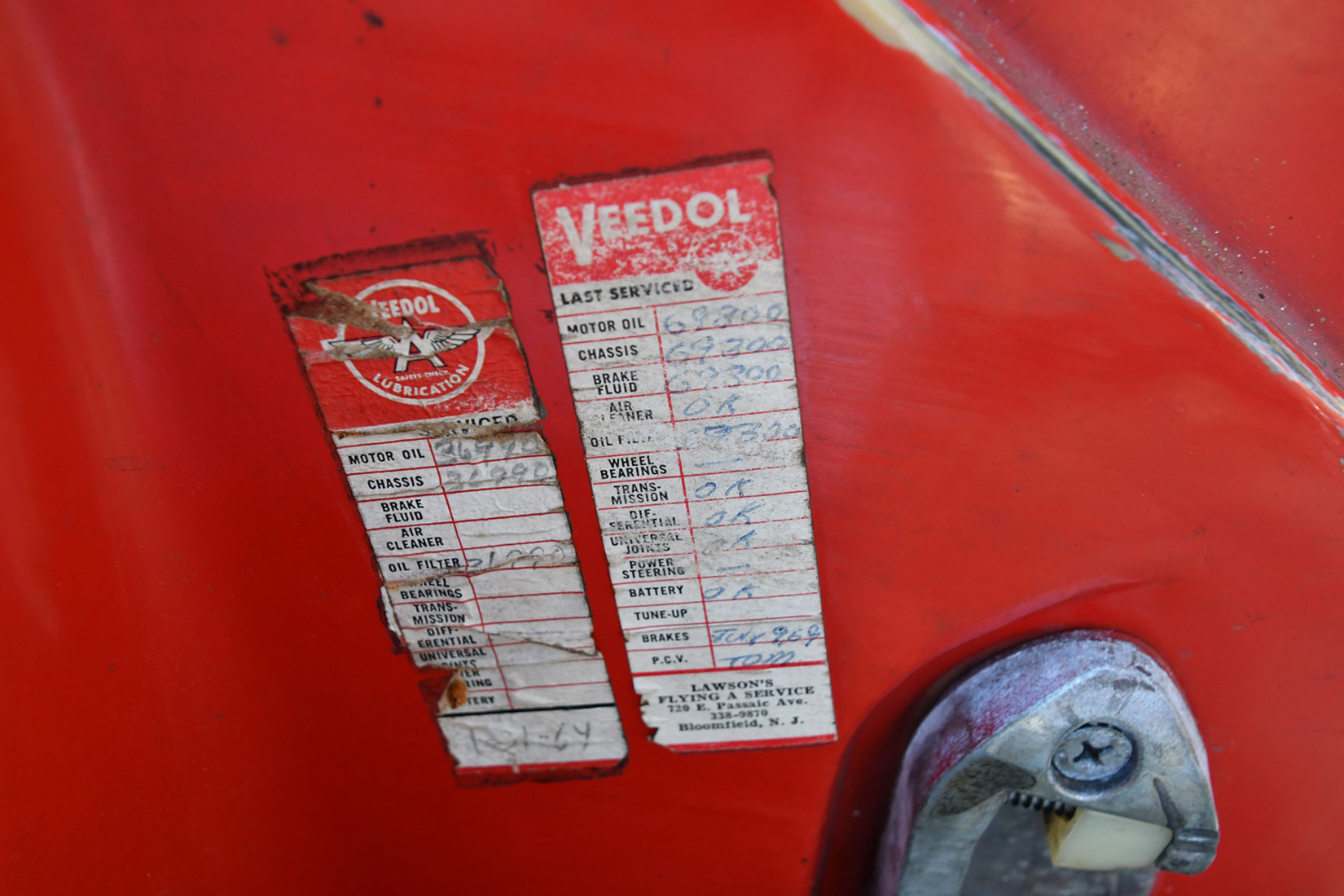
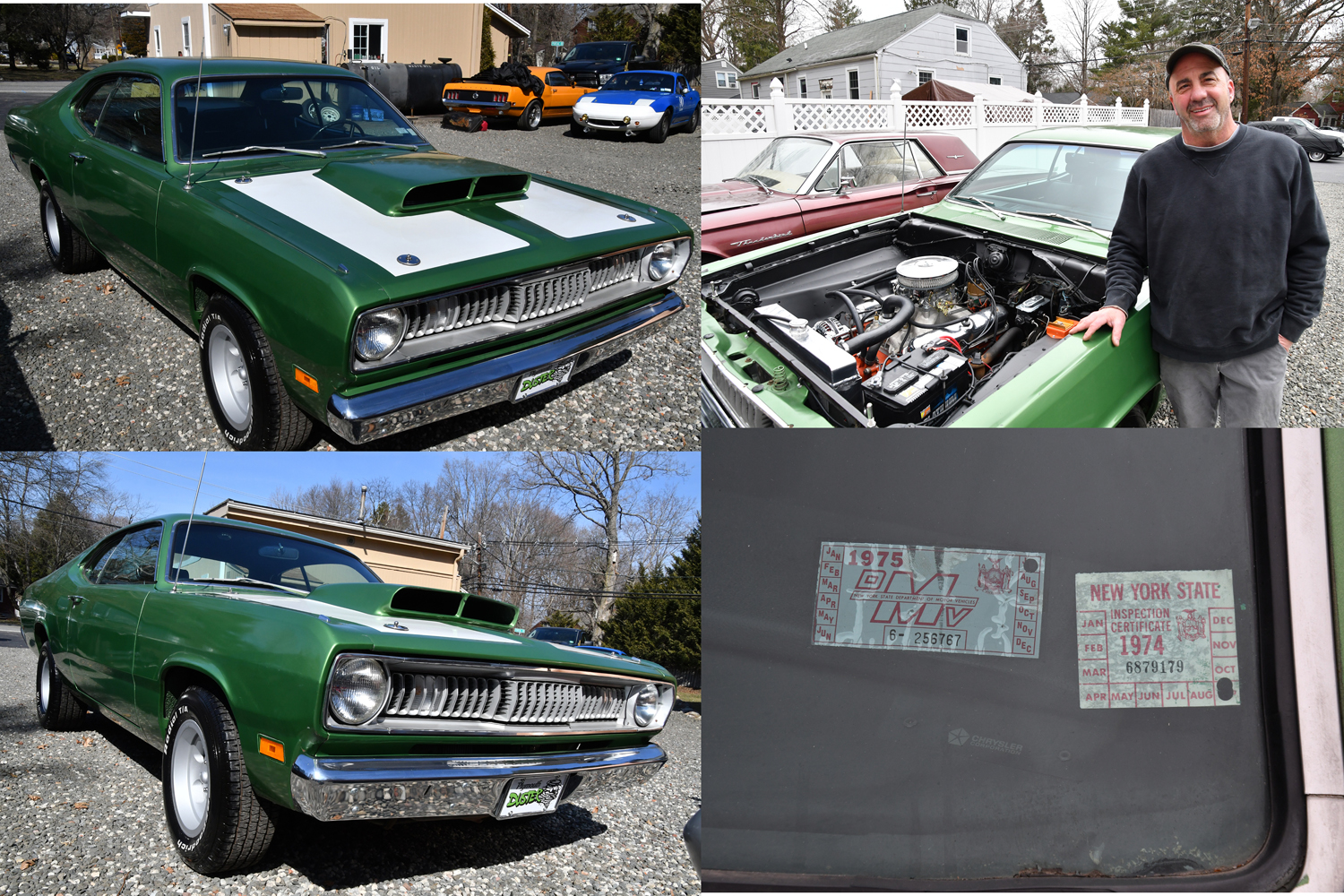
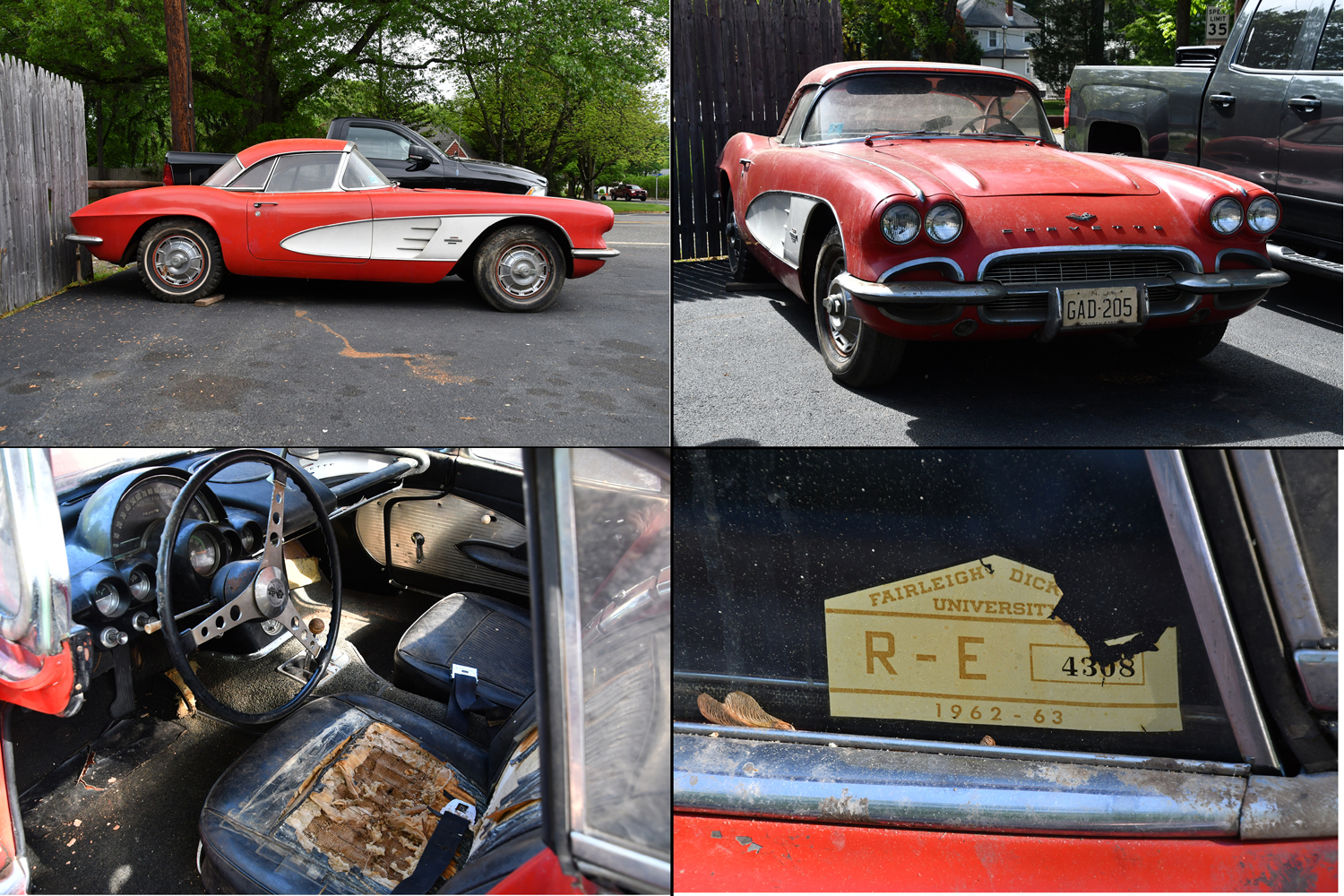
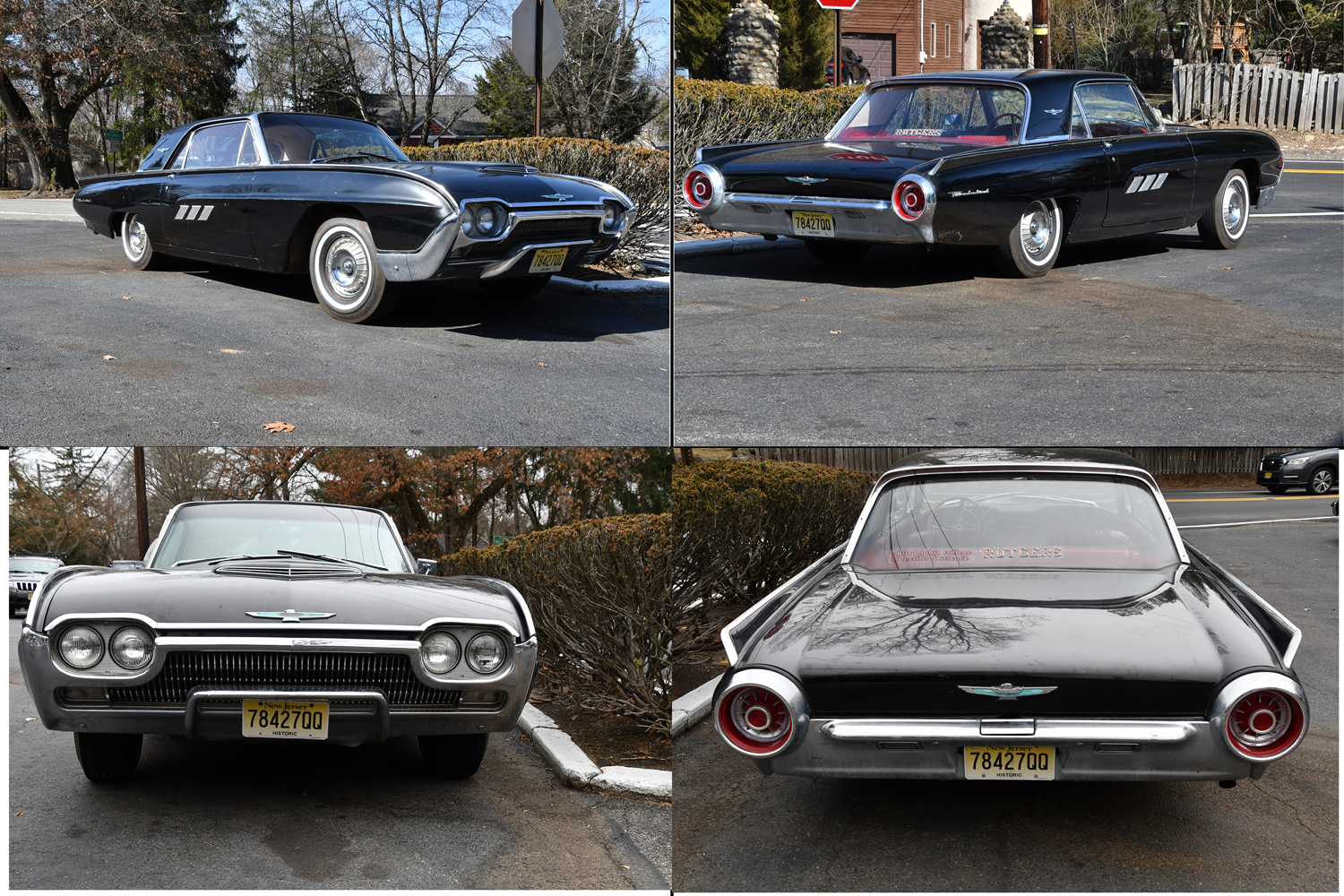
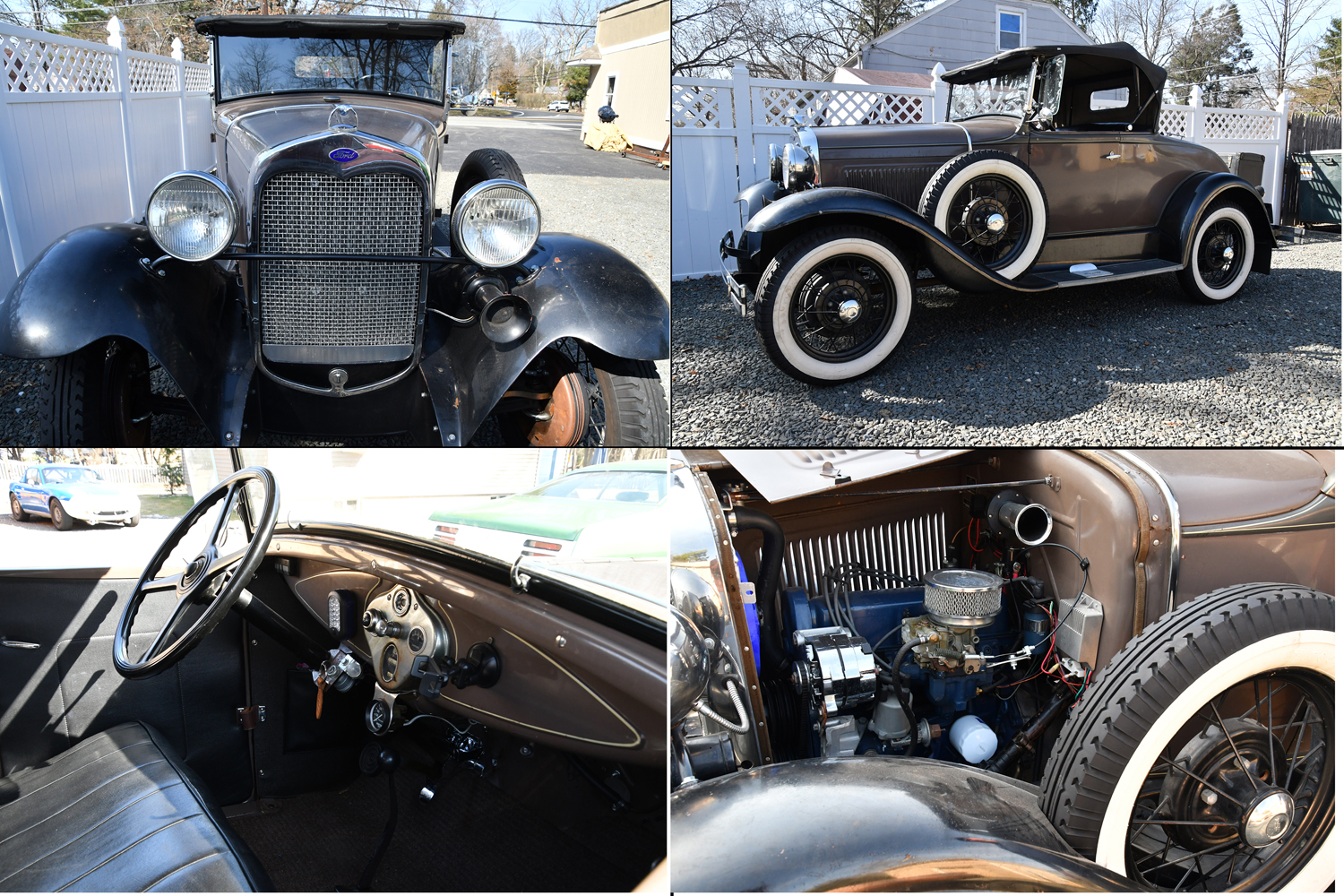
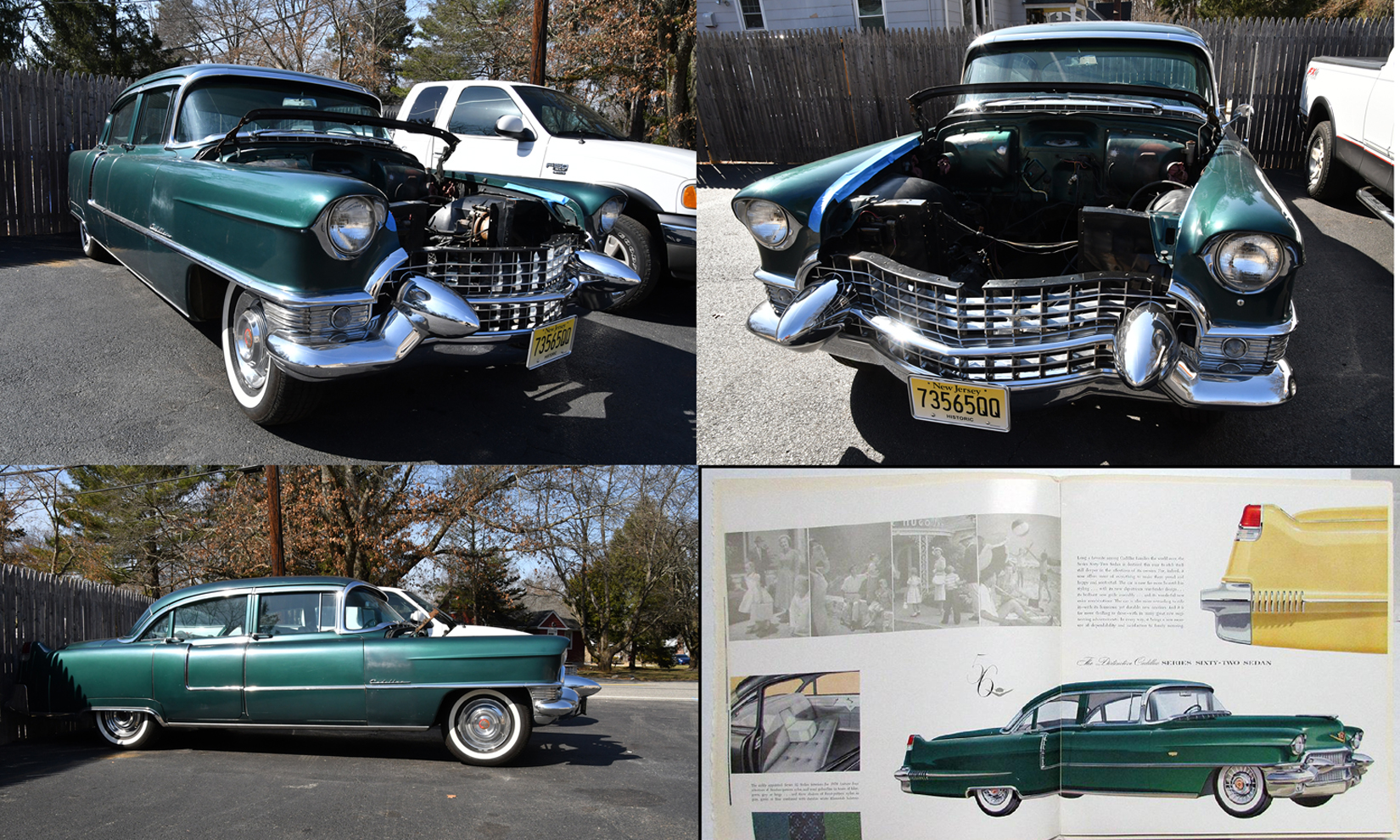
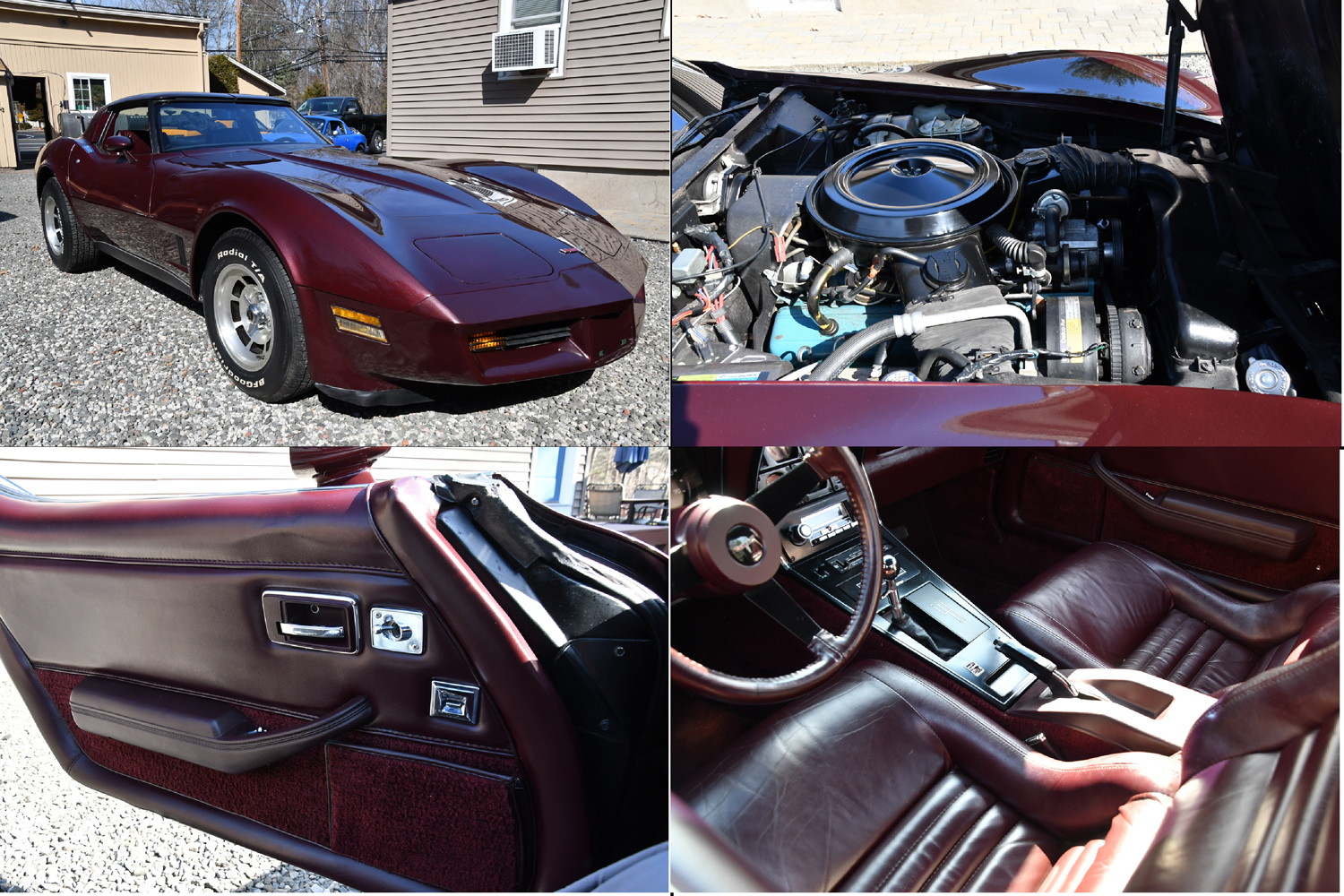


 Teams faced treacherous back roads that twisted through the rugged narrow mountain passes of the Italian back country that challenged both driver and navigator. Each race witnessed head to head competition between some of the most dominant performance vehicles from companies such as Alfa Romeo, Lancia, Ferrari, Mercedes-Benz, Porsche, Maserati, Aston Martin and Jaguar. In 1957 one of those vehicles, a Ferrari 335S driven by Alfonso de Portago had a front tire burst causing him to somersault through a crowd of spectators by the tiny village of Guidizollo. Eleven people including de Portago and co-driver Ed Nelson died. The dead included 5 children. This catastrophic accident outraged the Italian public to a such a degree that it ended the Mille Miglia as a competitive race and indeed pretty much ended all racing on public roads in Italy.
Teams faced treacherous back roads that twisted through the rugged narrow mountain passes of the Italian back country that challenged both driver and navigator. Each race witnessed head to head competition between some of the most dominant performance vehicles from companies such as Alfa Romeo, Lancia, Ferrari, Mercedes-Benz, Porsche, Maserati, Aston Martin and Jaguar. In 1957 one of those vehicles, a Ferrari 335S driven by Alfonso de Portago had a front tire burst causing him to somersault through a crowd of spectators by the tiny village of Guidizollo. Eleven people including de Portago and co-driver Ed Nelson died. The dead included 5 children. This catastrophic accident outraged the Italian public to a such a degree that it ended the Mille Miglia as a competitive race and indeed pretty much ended all racing on public roads in Italy.
 how the previous two days were spent driving to Brescia in a steady downpour. Starting with Day 1 rain would never be an issue. Heat would be.
how the previous two days were spent driving to Brescia in a steady downpour. Starting with Day 1 rain would never be an issue. Heat would be.













 Being the owner of a Jaguar XK120MC, I appreciate the intolerance for heat engineered into every XK120. As Day 5 approached conclusion, cars had to wait for an extended period idling in a queue under a blazing sun. As minutes ticked by and temperature gauges pegged, Many decided to simply shut down before damage occurred. I have noted that few photos of the 2025 Mille Miglia, if any, show incredibly credentialed and valuable vintage automobiles being pushed to the foot of the elevated stage. That said, I can now claim that while I never ran in the Mille Miglia, I did walk, as I helped Daisy Chu and Ping Hsu push their BMW 328 towards the finish line.
Being the owner of a Jaguar XK120MC, I appreciate the intolerance for heat engineered into every XK120. As Day 5 approached conclusion, cars had to wait for an extended period idling in a queue under a blazing sun. As minutes ticked by and temperature gauges pegged, Many decided to simply shut down before damage occurred. I have noted that few photos of the 2025 Mille Miglia, if any, show incredibly credentialed and valuable vintage automobiles being pushed to the foot of the elevated stage. That said, I can now claim that while I never ran in the Mille Miglia, I did walk, as I helped Daisy Chu and Ping Hsu push their BMW 328 towards the finish line.

 unusually thick Gulf of Finland ice as it plowed across from the east with its spotlights slicing the darkness as it scanned its surroundings. Continuing on its present course it would cleave the line Jack had plotted for the Royale’s escape route. The Lenin, a 440-ft. nuclear powered ice breaker usually patrolled the arctic ice that presented greater challenges than the normally more moderate ice cover in the Gulf of Finland. For a number of years it had been the pride of the Soviet Northern Fleet. However, chance would find The Lenin in the Gulf and, now, it towered as a powerful force determined to frustrate Mihkel’s plan. Clearly, It would be a race, plain and simple. Mihkel had to pass to the west of the ice crushing Soviet juggernaut before it cut a channel preventing his escape to Finland and freedom.
unusually thick Gulf of Finland ice as it plowed across from the east with its spotlights slicing the darkness as it scanned its surroundings. Continuing on its present course it would cleave the line Jack had plotted for the Royale’s escape route. The Lenin, a 440-ft. nuclear powered ice breaker usually patrolled the arctic ice that presented greater challenges than the normally more moderate ice cover in the Gulf of Finland. For a number of years it had been the pride of the Soviet Northern Fleet. However, chance would find The Lenin in the Gulf and, now, it towered as a powerful force determined to frustrate Mihkel’s plan. Clearly, It would be a race, plain and simple. Mihkel had to pass to the west of the ice crushing Soviet juggernaut before it cut a channel preventing his escape to Finland and freedom. Jack stepped outside. In a few bitingly cold moments he heard a loud rhythmic sound coming in low and fast. Looking towards Mihkel, Jack uttered in disbelief, “Jesus.” Stirring up a bone chilling swirling storm of snow a Sikorsky Super Stallion heavy-lift helicopter hovered, then, it set down a short distance from the Royale. Sliding back the cockpit window Ed “Wonderfalk” Sikes yelled to hook up the car as the helicopter’s side door opened and John Taylor brought out rigging cables. The biting cold made it too difficult and painful to talk. Talking could wait. Jack knew exactly what to do. This Bugatti had been designed with four jack points to facilitate rapid tire changes during a race. Each jack point consisted of a 10-inch long high strength steel bar attached between two gusseted chassis mounts. With a cable affixed to each of the four jack points everybody scrambled on board except Jack. He remained on the ground to make sure the load hung properly. With the grace of an Olympic gymnast the Super Stallion with Wonderfalk at the controls lifted the Bugatti. With the Royal suspended from the cables and hanging flat and steady a few feet off the ground, John tossed down a rope ladder which Jack climbed. Now sealed up and airborne the big chopper turned north and, with its priceless cargo firmly secured, headed across the frozen international waters towards Finland and freedom.
Jack stepped outside. In a few bitingly cold moments he heard a loud rhythmic sound coming in low and fast. Looking towards Mihkel, Jack uttered in disbelief, “Jesus.” Stirring up a bone chilling swirling storm of snow a Sikorsky Super Stallion heavy-lift helicopter hovered, then, it set down a short distance from the Royale. Sliding back the cockpit window Ed “Wonderfalk” Sikes yelled to hook up the car as the helicopter’s side door opened and John Taylor brought out rigging cables. The biting cold made it too difficult and painful to talk. Talking could wait. Jack knew exactly what to do. This Bugatti had been designed with four jack points to facilitate rapid tire changes during a race. Each jack point consisted of a 10-inch long high strength steel bar attached between two gusseted chassis mounts. With a cable affixed to each of the four jack points everybody scrambled on board except Jack. He remained on the ground to make sure the load hung properly. With the grace of an Olympic gymnast the Super Stallion with Wonderfalk at the controls lifted the Bugatti. With the Royal suspended from the cables and hanging flat and steady a few feet off the ground, John tossed down a rope ladder which Jack climbed. Now sealed up and airborne the big chopper turned north and, with its priceless cargo firmly secured, headed across the frozen international waters towards Finland and freedom.



 Viktor, his face illuminated by the Snow Cat instrument cluster, lead the way into the pitch darkness of the early morning. The Snow Cat’s bright headlamps and rooftop spotlights carved a tunnel of light ending at the surrounding desolate forest in the distance. Elderly Peeter, his breath billowing like a cloud encircling his weather lined face stood at the open warehouse door as the Royale eased out like a great ship departing port. Accompanying the movement of this grand Bugatti like some great mechanical musical instrument, the snow chains wrapped about each tire accompanied each rotation with a husky rhythmic rattle, clink and clatter. Mihkel in pulling out had just begun to get a feel for the Royale. On the light dusting of fine snow, the brutish torque of the engine spun the wheels and threw a chain free. Mihkel gunned the engine in frustration and hopped out of the car together with Jack to ensure once and for all the chains would remain in place. The lights of the Snow Cat bathed the big Bugatti in welcome illumination as Mihkel and Jack labored in the cruel cold.
Viktor, his face illuminated by the Snow Cat instrument cluster, lead the way into the pitch darkness of the early morning. The Snow Cat’s bright headlamps and rooftop spotlights carved a tunnel of light ending at the surrounding desolate forest in the distance. Elderly Peeter, his breath billowing like a cloud encircling his weather lined face stood at the open warehouse door as the Royale eased out like a great ship departing port. Accompanying the movement of this grand Bugatti like some great mechanical musical instrument, the snow chains wrapped about each tire accompanied each rotation with a husky rhythmic rattle, clink and clatter. Mihkel in pulling out had just begun to get a feel for the Royale. On the light dusting of fine snow, the brutish torque of the engine spun the wheels and threw a chain free. Mihkel gunned the engine in frustration and hopped out of the car together with Jack to ensure once and for all the chains would remain in place. The lights of the Snow Cat bathed the big Bugatti in welcome illumination as Mihkel and Jack labored in the cruel cold.

 In that pivotal two-day period Viktor played the web of the Oja family underground like a virtuoso violinist. In that brief period he had arranged what he and Mihkel believed to be an ideal site in Harju County to relocate the Royale. In searching for a new work space Viktor had located an abandoned brick kiln very appealing on numerous counts especially its remoteness and proximity to the Gulf of Finland from where Mihkel would launch his escape. Its roomy interior and still functional fireplaces would provide an acceptable space to prep and stage the Bugatti for its planned midnight run to Finland and freedom.
In that pivotal two-day period Viktor played the web of the Oja family underground like a virtuoso violinist. In that brief period he had arranged what he and Mihkel believed to be an ideal site in Harju County to relocate the Royale. In searching for a new work space Viktor had located an abandoned brick kiln very appealing on numerous counts especially its remoteness and proximity to the Gulf of Finland from where Mihkel would launch his escape. Its roomy interior and still functional fireplaces would provide an acceptable space to prep and stage the Bugatti for its planned midnight run to Finland and freedom.

















